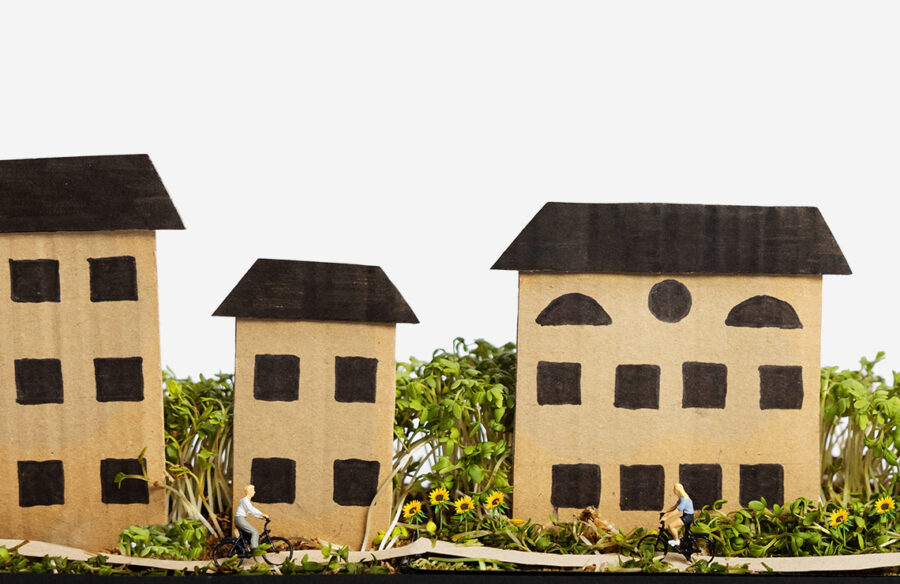Help! My smartwatch became a PT from hell
Help! My smartwatch became a PT from hell
Optimising your body and mind has never been easier. But is it really that healthy to measure our health down to every heartbeat? Wearable technology, pressure to perform, a growing wellness industry and AI are becoming a toxic cocktail.
By Tobias Brandel
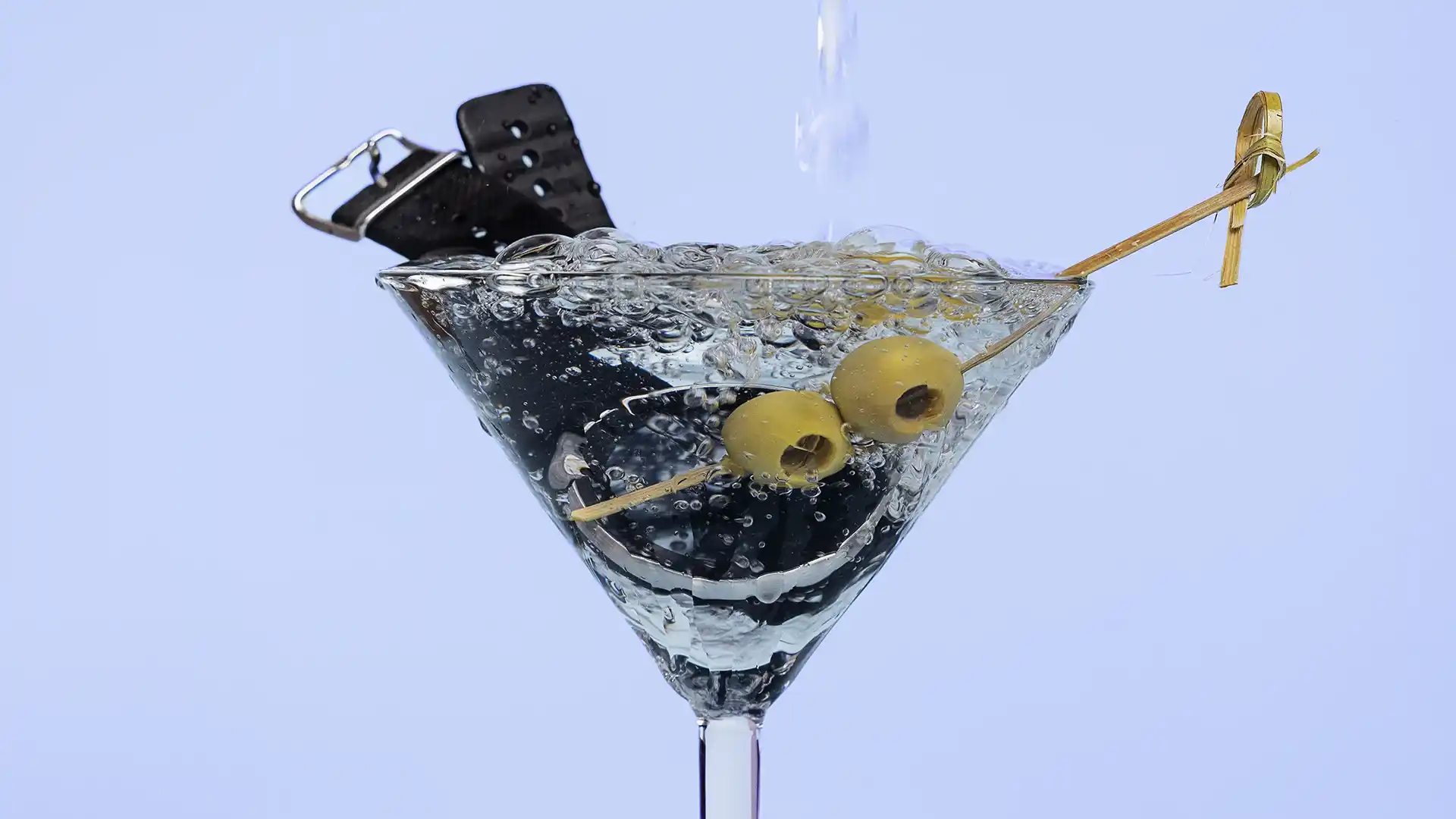
Help! My smartwatch became a PT from hell
Optimising your body and mind has never been easier. But is it really that healthy to measure our health down to every heartbeat? Wearable technology, pressure to perform, a growing wellness industry and AI are becoming a toxic cocktail.
By Tobias Brandel
“People are so self-absorbed.” My mothers’s reaction when I showed her which of “my” articles had performed best lately was not quite the maternally, uncritical praise I had expected.
Last autumn, I took on the role of science editor after several years as head of Svenska Dagbladet’s political coverage. To clarify what type of articles I am now editing, I showed her a recent summary of successful headlines from the managing editor’s endless collection of PowerPoint presentations. Among them: “You control the success of your child – but not the way you expect”, “Mediterranean eating habits beat all other diets in the long run” and “Henrik, 42, follows the most effective method of weight training according to research.”
A slightly more refined way of expressing my mother’s nevertheless rather sharp observation is that SvD’s science coverage focuses quite a bit on “useful science.” Stuff that helps people in their daily lives.
People want to perform in all areas
Our readers are interested in their own well-being and development; in health, nutrition, fitness, psychology and the process of learning.
These days, this type of journalism accounts for notably large sections of international news sites such as The New York Times and The Washington Post. People want to perform in all areas of life – career, family, leisure time, health.
As a freshman science editor, I soon discovered the role also included the specific requirement of presenting new scientific findings in the area of fitness and training every week. A slightly prejudiced – and totally incorrect – idea of the type of fitness articles that should work in a “Grey Lady” newspaper like SvD would be… well, home exercises for seniors.
However, I quickly came to the realisation that, in terms of their physical status, our fitness-interested readers perform well above the average exerciser, aiming for the elite. Articles on heavy gym workouts are appreciated the most.

When McKinsey recently published a special report on the wellness industry, it was valued at 1.5 trillion USD, with an annual growth rate of 5–10%.

When McKinsey recently published a special report on the wellness industry, it was valued at 1.5 trillion USD, with an annual growth rate of 5–10%.
Overall, SvD’s fitness pieces are often the best performing of all articles on the site during the day of publication, regardless of which indicators you look at – subscription sales, page views among existing subscribers, scroll depth and so on. At least in January (New Year’s resolutions must be fulfilled!), May (dawning beach panic!) and August/September (time for a fresh start after a wine-soaked holiday…).
The pattern is similar when it comes to the many articles we publish on research related to nutrition and diet. How should I eat to be as healthy and enjoy as long a life as possible?
Turning our gaze from the newspaper industry and looking more broadly at the tech sector, there is perhaps one small gadget above all else that is driving developments in terms of people’s persistent struggle to improve themselves.
The annual trend survey “Worldwide Survey of Fitness Trends” from the American College of Sports Medicine is something of a bible in the fitness industry. The top spot in 2023 went to wearable technology, a term that has consistently placed itself at or near the top of the survey results each year since it was first introduced on the list in 2016. By no means a coincidence, the first version of Apple Watch had been released on the market one year earlier.
The next phase is around the corner
Heart rate monitors and more basic types of fitness trackers have, of course, been around much longer than that. But as usual, it was Apple who perfected the concept and raised the bar with its version of the smartwatch, which quickly became the market leader.
Now the next phase of the wearable technology revolution is around the corner, with the AI hype reaching this sphere.
The spreading of rumours regarding Apple’s upcoming products is, in itself, something of a journalistic genre. Much of the recent speculation has concerned an “AI-based health coach” for Apple Watch. No such innovation was to be seen when the latest version was released in September 2023, but the likelihood is that it will appear in 2024, or perhaps it will have already launched by the time you read this.
The 2023 top spot in the annual “Worldwide Survey of Fitness Trends” from the American College of Sports Medicine went to wearable technology.


The 2023 top spot in the annual “Worldwide Survey of Fitness Trends” from the American College of Sports Medicine went to wearable technology.
The Apple Watch has evolved into a rather impressive health product in recent years. Today, it can measure your heart rate, body temperature, how much time you spend sleeping and standing, calculate the amount of calories you burn, and so on. Furthermore, the most advanced versions are also able to execute an ECG, measure your blood oxygen level and calculate your menstrual cycle. However, in these areas, the scientific evidence is more dubious (Apple provides a disclaimer in the footnotes that these functions are not for “medical use”).
AI technology is, of course, already being applied. For example, Apple uses machine learning to detect irregularities in heart rate or if the wearer is involved in a serious car accident (whereupon the watch automatically calls the emergency services).
Future areas
Some potential future areas of development for artificial intelligence in wearable technology include:
Detecting a range of health problems – acute or long-term, physical as well as psychological – by studying patterns, deviations and trends. It may also be possible to provide healthcare professionals with assistance in making diagnoses.
Creating personalised training, dietary and treatment programs based on each individual’s unique metrics and biometric data.
Motivating people to adopt a healthier lifestyle through smart forms of encouragement.
There are plenty of fitness apps for mobile devices that help you train and exercise on your own, based on video and audio instructions. But unlike a human personal trainer, such apps don’t tell you when you risk hurting your back doing heavy squats, or when your down dog is way too crooked. A number of companies are now experimenting with wearable technology in this regard, i.e. the use of built-in sensors to guide the user and provide feedback. The aim is to ensure that we don’t just exercise – but that we exercise in the right way.
Alas, personal trainers could soon join journalists and other professionals who have reason to worry about being replaced by an AI in the near future.
Nevertheless, there are still many things that smartwatches are far from mastering. The area of nutrition and diet, for example, is far more complex than simply measuring physical activity.

Perhaps the pedometer is the vote compass of wearable technology? In other words, the only digital service we really need.

Perhaps the pedometer is the vote compass of wearable technology? In other words, the only digital service we really need.
Nutrition research is sometimes subject to criticism for methodological issues. For practical reasons, scientists are constrained to execute observational studies and to rely on people’s own information regarding their dietary habits. The problem, of course, is that people – whether due to forgetfulness or embellishment – don’t always do what they say they do.
The problem, of course, is that people – whether due to forgetfulness or embellishment – don’t always do what they say they do.
And it is difficult to distinguish between cause and effect in these types of studies – or what is simply genetics, rather than habits.
An increasing amount of research also suggests that how we are affected by our diet is highly individual (which explains why individuals who have achieved success with a certain diet – be it low-carb, intermittent fasting or something else – are so eager to tell the world). There quite simply isn’t one diet that suits everyone.
AI has enormous potential
Here, artificial intelligence could have enormous potential when it comes to cracking the individual code. Exactly how should I, out of all billions of people, eat in order to be healthy? But more advanced measurement methods are also required. Blood sugar meters will be a key component. Google, among others, has conducted research into contact lenses that can measure the glucose level in tears.
If we adopt a full-blown science fiction perspective, Apple Watch and the likes from Samsung, Fitbit and other manufacturers are probably just one step on the path to a future reality in which we have a chip implanted directly into our body, or nanobots injected into our bloodstream.
But enough for now about the technological developments – what are the human drivers behind this accelerating monitoring of ourselves?
Perhaps it’s not really all that remarkable. All high-performing, self-absorbed people have simply been presented with yet another way to measure their success in life. Society’s constant pressure to perform, literally strapped around your wrist.
Extremely frustrated
Most smartwatches are pretty good at detecting when you consciously or unconsciously engage in some form of physical activity, such as walking or cycling. They discreetly buzz to suggest that they should start monitoring your current training session. I myself get extremely frustrated when I have commenced a walk or gym workout and realise that I have forgotten to put on my watch. If the exercise isn’t registered then it hasn’t happened!
The most amusing experience occurred a few years ago when I was taking my two children to preschool, and the Samsung watch I was wearing at the time asked me if I was engaged in high-intensity interval training.
Nowadays, as soon as there is a trend change in my physical performance, I receive a notification from my Apple Watch: I have exercised 27% more this month than last, my recovery heart rate has improved by 14% compared to the same period last year, and so on.
By gathering more and more data, we obtain an increasingly better basis for making decisions about our health – or having such decisions made for us. Inevitably, the smartwatch seems destined to become a personal 24-hour health employee.
When McKinsey recently published a special report on the wellness industry, it was valued at 1.5 trillion USD, with an annual growth rate of 5–10%. The consulting firm provides quite a good summary of all aspects covered by the term “wellness” from a consumer perspective:
- Health
- Fitness
- Nutrition
- Appearance
- Sleep
- Mindfulness
Wearable technology has potential in more or less all of these fields. Are we dealing with a toxic cocktail, with our own high expectations of ourselves, fuelled by a growing wellness industry and technological developments – soon on AI steroids – that perhaps is not particularly health-promoting at all?
Recently, in the course of my professional duties, I carried out a test of various yoga apps. One particularly nasty app had, when notifications were activated, opinions on most aspects of my life. When, for the fifth time that day, completely out of the blue, it asked me if I had remembered to drink a glass of water or recommended a playlist of soothing sounds, my response was not to respectfully mumble “Namaste.”
A relentless PT is perhaps possible to endure during three 60-minute sessions a week. But if he, completely unsolicited, were to tap me on the wrist with admonitions any time of the day, every day of the week, I’m fairly sure that I would terminate our arrangement pretty quickly.
What happens when everything is to be optimised, even such basic needs as sleeping and eating?
What happens when everything is to be optimised, even such basic needs as sleeping and eating? If there is something that should be allowed to be immeasurable – and permitted to be highly subjective – perhaps it is our own well-being. The constant process of evaluation can in itself lead to stress and pressure. When our health is measured down to each breath, it is simply not that… healthy anymore.
The philosopher Jonna Bornemark made quite an impact in the Swedish debate a few years ago with the book “The Renaissance of the Immeasurable.”
A showdown with the age of measurability, with a broadside aimed at New Public Management. When public services are standardised and everything must be documented to the point of absurdity, feelings – and the ability to act on them – are eventually rationalised away.
A philosophical book achieving such success was a little unexpected, but the protest says something about the times in which we now live. And her arguments are just as valid when it comes to the measurement of our personal performance.
If you’d like, it is also possible to add a class perspective to this dystopia. There is a correlation between socioeconomic factors and health. If advanced technology becomes an important component of well-being, this will benefit groups that have access to such technology. While those with less education and lower income – whose health status is already impacted to a greater degree by a sedentary lifestyle and poor diet – will fall even further behind.
So, please allow me to offer an alternative future scenario to the one in which large parts of the population will be walking around with a screaming health fascist around their wrist.
An ugly plastic device
Do you remember the electronic pedometers that were around long before smartphones and smartwatches ever existed? A rather ugly plastic device that you attached to your belt so that you could proudly announce to your colleagues how many steps you had taken during the day.
All right, here comes a perhaps slightly far-fetched analogy, but keep in mind that you are dealing with a former political news editor who has now switched to fitness journalism, so please bear with me.
During all my years covering politics, we tried to come up with a new, innovative digital service prior to each general election. Despite the best efforts of skilled developers and creative reporters during countless workshops every four years, nothing we created has ever come close to sparking our readers’ interest in the same way as The Vote Compass (“Valkompassen” in Sweden, “Valgomat” in Norway). You know, the digital form that asks you to answer 25 policy-related questions and then indicates which political party best matches your own views.
An ingenious idea – which was launched on SvD.se (as the first Swedish news site!) as early as 1998.
The most important question
How has this success from the early days of digitalisation been able to remain so unthreatened for almost three decades? Probably because it answers the most important question the reader asks herself during an election campaign: “Who should I vote for?” (The second most important question – “Who will win the election?” – is answered by opinion polls.)
Perhaps the pedometer is the vote compass of wearable technology? In other words, the only digital service we really need.
It has now moved into our mobile phones and smartwatches, but it likely still remains the most common way of using wearable technology for health purposes. Am I going to reach my goal of 10,000 steps a day or not? (According to the latest research, a lot less is actually required to achieve health benefits.) Perhaps most of us don’t want to know more.
To me, the heart rate monitor is the only wearable function I actually find useful in my personal health project, to make sure I remain in the right heart rate zone during my workout. Slightly more advanced than counting steps, but not much.
My point is that technology will not be used just because it exists and is advanced. Rather, the technology that succeeds is the technology that meets actual needs in our daily lives (or that manages to manipulate our psychological needs, like social media).
I propose that all developers of wearable technology should apply my “mother test:” Is this something that would interest a self-absorbed person? Or, to use somewhat more correct customer insights language: Is this helpful for people in their daily lives?
When I received what, at the time, was the brand new Apple Watch model from my husband last Christmas, I initially experienced childlike delight at exploring all the exciting functions. The new sleep tracker was particularly alluring.
By sleeping with the watch on (when are you actually supposed to charge it?), each morning I could take part in a series of neat diagrams to see how I had moved between REM sleep, core sleep, deep sleep and wakefulness during the night. And, not least, if I had reached the goal of sleeping for a total of eight hours, as you should if you want to be at the top of your game.
But after a month or so I started taking the watch off at night.
The feeling of constantly being monitored and evaluated did not contribute to my night rest.
And the irony of the fact that even recovery had become a measurable performance was something that could not be missed – not even by a self-absorbed SvD editor.
[Sassy_Social_Share]

Tobias Brandel
Science Editor, SvD
Years in Schibsted: 20
My favourite song the last decade: Chandelier – Sia
If I don’t speak up then who will?
“If I don’t speak up then who will?”
Isabella Olsén is a successful leadership coach in Schibsted, with an autism diagnosis. Despite some concerns, she decided to share her experience to open up the conversation about neurodiversity.
By Ann Axelsson
Isabella Olsén think it´s important that we don´t let the conversation about diversity get too fluffy, we should instead go a bit deeper.
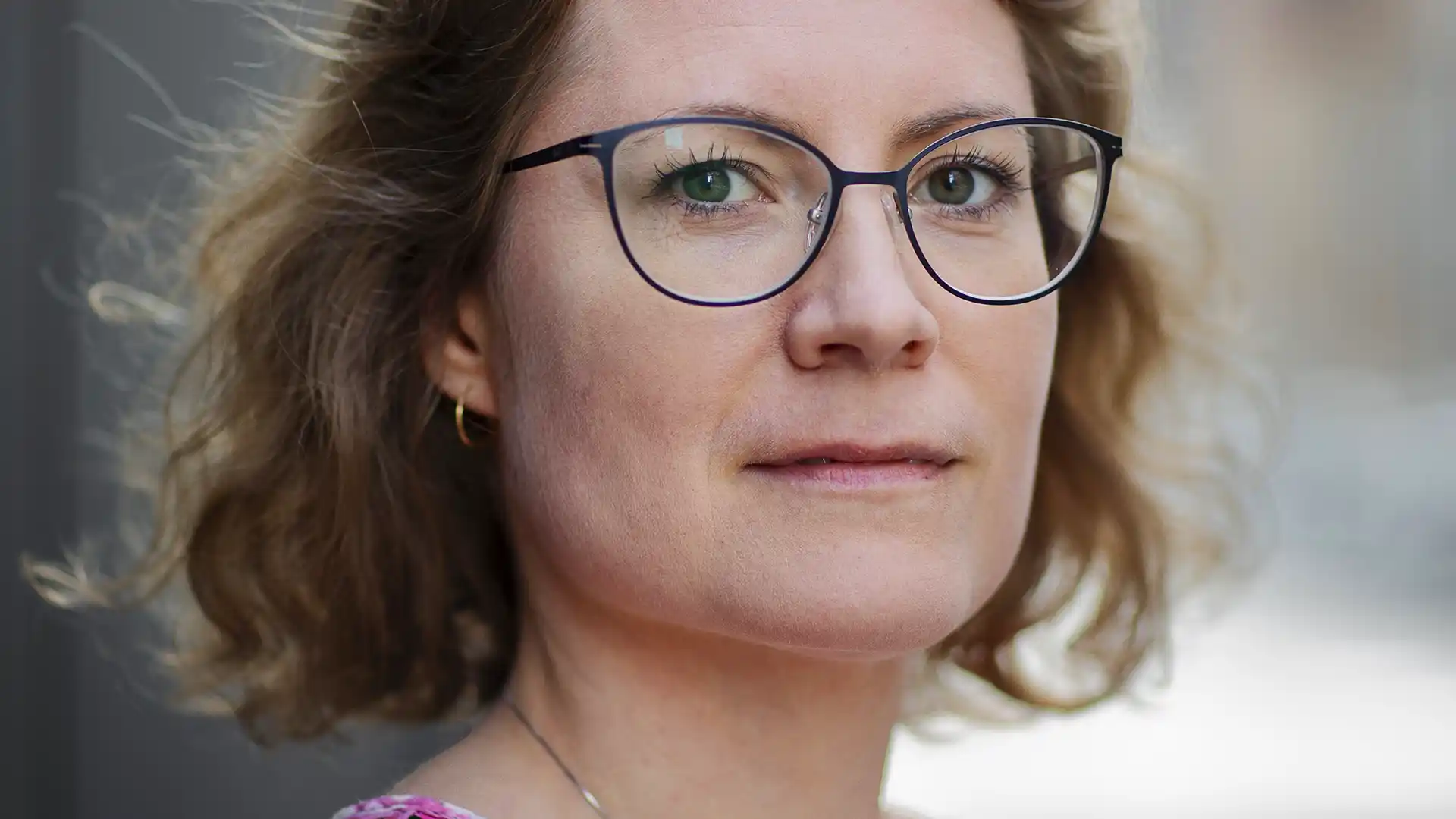
“If I don’t speak up then who will?”
Isabella Olsén is a successful leadership coach in Schibsted, with an autism diagnosis. Despite some concerns, she decided to share her experience to open up the conversation about neurodiversity.
By Ann Axelsson
“Do you know that you are autistic?” That was the first thing the person evaluating an assessment she had just taken said. Isabella Olsén did not know, and that was the beginning of a journey of deep self-discovery.
Isabella is working as a leadership coach at Schibsted. She has many years of experience as a successful tech leader and she completed advanced education without struggle.
“People who meet me often can’t tell that I am autistic, and some of the traits that come with my autism are also the traits that helped me succeed.”
She explains that she can focus very intensely on things she’s interested in, she is very logical, and she can solve complex problems. “When I’m interested in a subject, I don’t read one book – I read ten.”
Special talents for being a coach
Some of her special talents also make her a really good coach. “I am perceptive, have an excellent memory and don’t particularly enjoy small talk. I quickly dive into real conversations, and I seem to make the people I work with feel comfortable sharing and exploring.” At this point, she has coached more than 100 leaders in Schibsted.
But she has always known she is different. Some things that are easy for other people to do are hard for her and make her feel exhausted. One of them is social contact.
“Unstructured social situations take a lot of energy from me. I don’t have natural social intuition, at least not according to the neurotypical standards, so I have to think my way through it. And I mask the things I know aren’t socially acceptable.”
So, Isabella came to a point in which her life wasn’t working out, and that’s when she got her diagnosis.
“It took some time to accept, mainly because I don’t fit the stereotype, but in the end, it helped me to understand why I feel different and why some things are so hard for me.”
At the same time, she sometimes feels that she doesn’t fit into the autism community either.
“Autism is a broad concept, and I’m not very far out on the scale. So, I often hear that I’m not the best person to talk about it.”
But at one point she decided that she wanted to do just that. In Schibsted many of us saw her in a Town Hall meeting where she explained the importance of talking about neurodiversity and making use of everyone’s special skills and talents. It wasn’t an easy decision to tell that story in front of all her colleagues.
“I don’t want to be identified by my diagnosis only and I was afraid that people wouldn’t want to have me as a coach anymore. Many who also have a diagnosis said they would never share openly like that. But I have only gotten positive feedback after that meeting.”
She will keep speaking up
Daring to speak up is also part of who she is. And why she plans to continue doing just that.
“I think we should speak more openly about neurodiversity. It’s really important to have different types of people in a workplace. The culture will benefit, and the company will do better.
“And if I don’t speak up then who will? As a coach I expect people to share, be honest and open. So, I should too. I believe in living what you teach and being who you want to be.”
She also believes that sometimes when we speak about diversity, it gets a bit too fluffy. It’s easy to use nice words, but what do they really mean? She thinks the conversation should go a bit deeper. And acknowledge that with these topics come some hard questions.
“I wish we could have a more open conversation, both about what works and what doesn’t in a workplace, and about how we are different and how some of us might need some adaptations to be at our best. Today it’s hard to speak about differences without offending. It’s easy to do and say the wrong thing.”
Isabella is obviously starting that conversation. And it’s a conversation we need to have – today 70–80% of people on the autism spectrum are unemployed.
“We need to create a culture in which we can talk about these topics, equip employees with knowledge, and define what actions we can take.”
Isabella is where she wants to be, working as a leadership coach was her goal and she gets to use all her skills, competencies and experience. And she’s living what she teaches – speaking up.
Still, she also wants to remind us all about one thing:
“I am autistic – but first and foremost I am so many other things. Just like everyone, with or without a diagnosis.”
[Sassy_Social_Share]

Ann Axelsson
Senior Product Manager, Strategic Communication, Schibsted
Years in Schibsted: 25
My favourite song the last decade: Paper Doll – John Mayer
How culture can help you reach your business goals
How culture can help you reach your business goals
People and culture are the most important assets in every successful company. But how can you actively lead culture in the direction that supports your business and gets you where you want to be?
By Enna Kursukangas
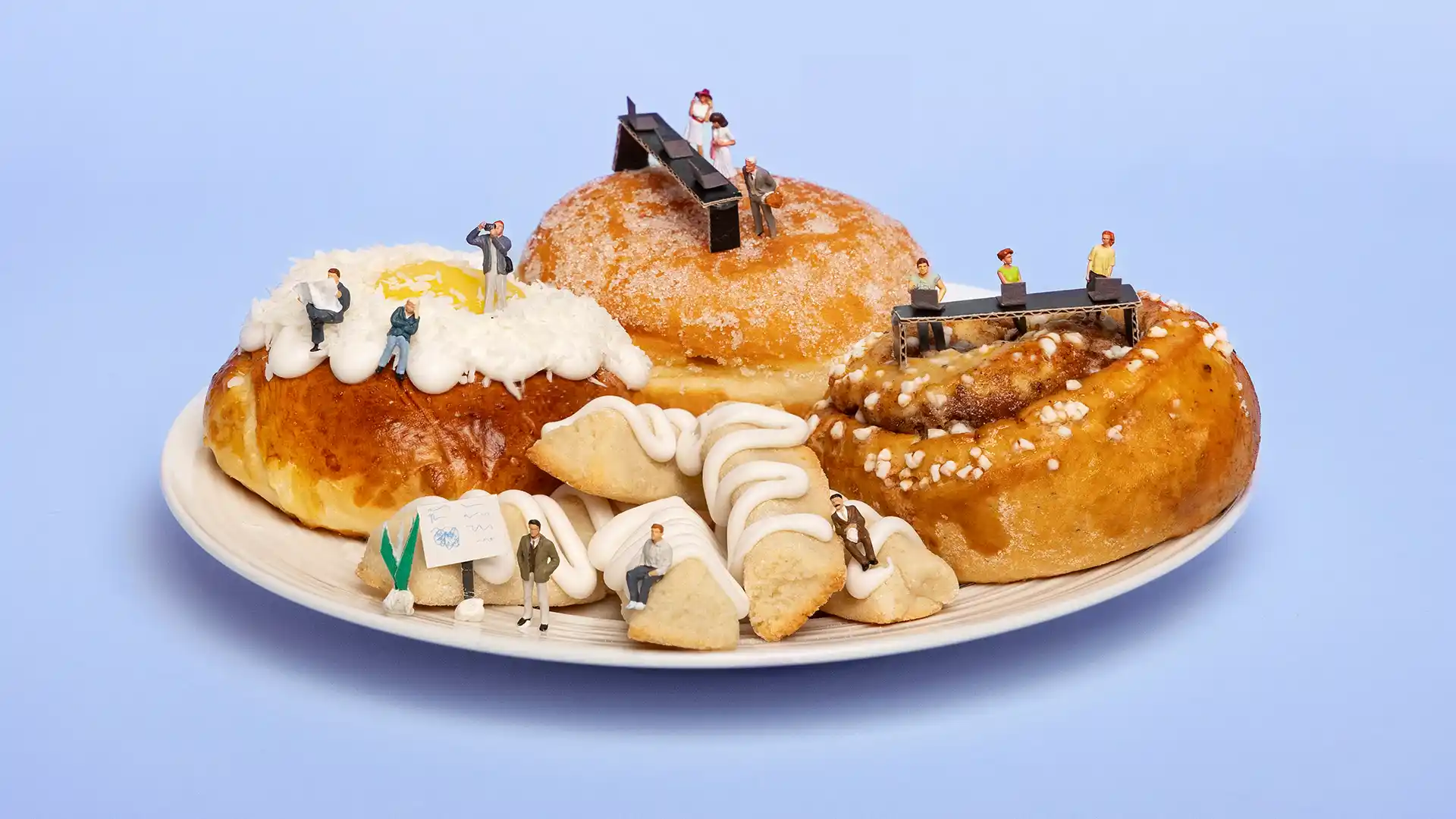
How culture can help you reach your business goals
People and culture are the most important assets in every successful company. But how can you actively lead culture in the direction that supports your business and gets you where you want to be?
By Enna Kursukangas
Without people, companies would be empty. And without a consciously driven culture, it’s hard to harness the full potential of an organisation and deliver the results the company aims for. But how can we define what culture is?
There are plenty of suggestions out there. My favourite is one of the simplest ones I’ve heard: “It’s what happens when no one is watching.” Culture is what we do, it’s about our habits, our values and the unwritten rules that affect our actions. On a more practical level, the things that help us to build a culture include the way we lead, how we set targets and prioritise, how we organise ourselves and so on.
Culture develops every day
Everything we do and don’t do affects our culture, and on the other hand, our culture affects how we do things. Culture is not something that changes overnight; it’s something that continues to develop every day.
Over the past 20 years, I’ve worked in companies of different sizes, different industries and different business situations. I’ve learned that no matter if it is a startup, a huge corporation, or a company in growth or decline, some things have proven to be universally relevant when talking about the importance of a culture and how to build it. Here are my key learnings on why culture is so crucial to all companies.

Everything we do and don’t do affects our culture, and on the other hand, our culture affects how we do things.

Everything we do and don’t do affects our culture, and on the other hand, our culture affects how we do things.
There is always a culture, no matter what we do about it. But by making conscious decisions, we can have the kind of culture that enables us to get to where we want to be.
Company strategies tell us where to go, and culture makes sure we get there. Culture is a tool for a company to achieve what it’s after. It’s never a destination, but without actively leading culture, it’s much harder to get to the intended destination.
It’s in your goals
Everything we do represents the culture we have. It’s not soft. It’s not hard. It’s all that and everything in between. It’s in your goals, it’s in your walls, in your websites and in your daily decisions. It’s present when you hire as well as when you need to fire. You can’t separate the culture from anything you do. It affects your actions, and every action affects your culture.
It’s easy to see why culture is an important asset and something you should actively lead within your organisation. But how do you do that? How do you take control of something so organic and something that is so hard to measure? The truth is that you can’t control it, but you can, and you should, actively lead it in the direction that helps your business get to where you want to be.
You should be loud about what kind of culture you aim for and co-design the structures that help you achieve it.


You should be loud about what kind of culture you aim for and co-design the structures that help you achieve it.
Discover your current culture. To take an active role in leading culture, it’s best to start with understanding the current culture and what it is that you want to achieve as a company. And the best way to get to know your culture is by observing it and gathering different views on it. This should be ongoing work within the company, especially if you have a change need. At these times, it can be useful to seek external support to capture your current culture. Since all employees are part of the culture, it might be hard to see the unique traits you have within that culture from the inside.
Define what kind of culture you need and want. To take steps in this cultural journey, we need to define what kind of culture we need to achieve our goals. When defining, there are two important things to take into consideration. First, it’s hard to build a strong culture that attracts everyone. And there is no need for that either. Targeted culture should be built for the talents you need for your business to succeed. Second, culture is a tool to get to where you want to go, so make sure that what you define as your target culture, actually ensures you reach your business goals.
A roadmap
Be loud about what kind of culture you aim for and co-design the structures that help you achieve it. You might need a roadmap of initiatives to show the cultural change ahead and how to include people in this cultural work. But don’t trick yourself into believing that cultural change is something you can make happen using only flow charts, project plans or workshops. Instead, use the roadmap to illustrate the change you are leading and to get people on board.
Culture is hard to capture, which is why it’s even more important to focus on concrete initiatives, active communication and dialogue within the organisation. The right initiatives always depend on where the organisation is and what it aims for, but company values, a leadership framework and manager role definitions are concrete cultural building blocks that are helpful.
In Schibsted Nordic Marketplaces, we are in the middle of a major transformation, moving from country-based organisations to a cross-Nordic verticalised organisation. To enable this change, we focused on building a common culture across the Nordics and we co-designed four common values for Marketplaces:
- Make a difference
- Be curious
- Be fearless
- Win together
These values represent what unites us across countries, but also how we work together to really add value for our users, customers and co-workers. And how we build sustainable futures and create success on this shared journey. These values form a strong base for our common culture across the Nordics and they guide our behaviours, decisions and actions. These values give us the strength to lean into our transformation journey, because by continuing to be curious, staying fearless and focusing on winning together, this transformation will happen, and we will make a difference.
[Sassy_Social_Share]

Enna Kursukangas
People & Culture Director, Schibsted Nordic Marketplaces
Years in Schibsted: 3
My favourite song the last decade: Cha Cha Cha – Käärijä
10 years in pictures
10 years in pictures
Which are the most memorable and best pictures from the last decade? As Future Report celebrates its tenth anniversary we have looked back and gathered pictures from Schibsted’s newspapers to also celebrate the art of photography.
By Espen Rasmussen | Read 'A new era for photo journalism'
2022: In the trenches, five minutes from the village of Novoluhanske. Five days after this picture was taken, Russia went to war. Photo: Paal Audestad, Aftenposten.

10 years in pictures
Which are the most memorable and best pictures from the last decade? As Future Report celebrates its tenth anniversary we have looked back and gathered pictures from Schibsted’s newspapers to also celebrate the art of photography.
By Espen Rasmussen | Read 'A new era for photo journalism'
2023: Drag queen duo Lillan and Tjorven perform theatre for children at Dramaten in Stockholm, days before being harassed by right-wing extremists.
Photo: Emma-Sofia Olsson, Svenska Dagbladet
2023: Drag queen duo Lillan and Tjorven perform theatre for children at Dramaten in Stockholm, days before being harassed by right-wing extremists. Photo: Emma-Sofia Olsson, Svenska Dagbladet
2021: Refugees attempting to cross the Mediterranean in inflatable dinghies.
Photo: Photo: Espen Rasmussen, VG
2021: Refugees attempting to cross the Mediterranean in inflatable dinghies. Photo: Espen Rasmussen, VG
2020: Mask marks that hardly have time to disappear, before they are back again. A telling image of the lasting impact on healthcare workers during the pandemic.
Photography by Andreas Bardell, Aftonbladet
2020: Mask marks that hardly have time to disappear, before they are back again. A telling image of the lasting impact on healthcare workers during the pandemic. Photo by Andreas Bardell, Aftonbladet
2019: After Helene Gallis was diagnosed with breast cancer, she invited friends to feel her breast and learn what a tumour can feel like.
Photo: Monica Strømdahl, Aftenposten
2019: After Helene Gallis was diagnosed with breast cancer, she invited friends to feel her breast and learn what a tumour can feel like. Photo: Monica Strømdahl, Aftenposten
2018: More than 50 forest fires ravaged Telemark in Norway, officials called it “the worst forest fire in 27 years.” Pictured is the civil defence team at Elgsjø on Notodden in Telemark.
Photo: Helge Mikalsen, VG
2018: More than 50 forest fires ravaged Telemark in Norway, officials called it “the worst forest fire in 27 years.” Pictured is the civil defence team at Elgsjø on Notodden in Telemark. Photo: Helge Mikalsen, VG
2017: Tomas Oneborg was supposed to photograph sweets for Easter at Hötorget in Stockholm, when the terrorist act on Drottninggatan threw him into the chaos.
Photo: Tomas Oneborg, Svenska Dagbladet
2017: Tomas Oneborg was supposed to photograph sweets for Easter at Hötorget in Stockholm, when the terrorist act on Drottninggatan threw him into the chaos. Photo: Tomas Oneborg, Svenska Dagbladet
2016: The war in Syria is in its tenth year. Maha is only five. She and her family fled their hometown of Hawiga outside Mosul to escape ISIS. “I don’t dream anymore, and I’m not scared of anything,” she says.
Photo by Magnus Wennman, Aftonbladet
2016: The war in Syria is in its tenth year. Maha is only five. She and her family fled their hometown of Hawiga outside Mosul to escape ISIS. “I don’t dream anymore, and I’m not scared of anything,” she says. Photo: Magnus Wennman, Aftonbladet
2015. 26-year-old Ibrahim Abdulla under a trailer in the port city of Patras, Greece. He can’t say for sure how many times he has tried to get the ferry to Italy.
Photo: Paul S. Amundsen, Bergens Tidende
2015. 26-year-old Ibrahim Abdulla under a trailer in the port city of Patras, Greece. He can’t say for sure how many times he has tried to get the ferry to Italy. Photo: Paul S. Amundsen, Bergens Tidende
2014: The children of Gaza were hit hardest by the war. A fourth of the Palestinian victims were minors. As we produce the report in the autumn of 2023, the Middle East conflict has once again exploded.
Photo: Yvonne Åsell, Svenska Dagbladet.
2014: The children of Gaza were hit hardest by the war. A fourth of the Palestinian victims were minors. As we produce the report in the autumn of 2023, the Middle East conflict has once again exploded. Photo: Yvonne Åsell, Svenska Dagbladet.
When we unify our efforts, we can be in the forefront
“When we unify our efforts, we can be in the forefront”
Schibsted has a new SVP Engagement, Communication and Employer Branding. Jane Throndsen has her roots in News Media, coming from VG. Now, her primary focus is to create a common mindset about what Schibsted can achieve together – in a world that’s on fire.
By Ann Axelsson
Jane worked as an editor at the competitor newspaper Dagbladet in Oslo before being recruited by VG in 2012. During her time at VG, she served as both the Feature Editor and later as the Head of Paid Content, holding key positions within VG’s management team. After just two years at VG, she was named the Female Media Leader of the Year in Norway.

“When we unify our efforts, we can be in the forefront”
Schibsted has a new SVP Engagement, Communication and Employer Branding. Jane Throndsen has her roots in News Media, coming from VG. Now, her primary focus is to create a common mindset about what Schibsted can achieve together – in a world that’s on fire.
By Ann Axelsson
“Schibsted is a company with enormous power and so many competent people. At the same time, it’s a complex matrix organisation, with all its functions and brands,” says Jane.
Schibsted has some of the strongest brands in the Nordics. And it is not always obvious to employees in each of those brands why they are a part of Schibsted. Jane knows this well, having come from VG. She points out that each brand does an excellent job in engaging their employees – but that there is room for more of a Schibsted perspective. She wants to build this common pride, brick by brick.
Amidst this complexity, internal communication can be a strong tool to create knowledge and trust in a shared strategy, where a main message for Schibsted is that we are more than just the sum of our parts.
“I would like for our employees to feel that they are part of something bigger – and that bigger is supporting the job they’re doing.”
A tough future to navigate
And she is certain that Schibsted’s muscles are needed today. The world is literally on fire. As we speak, the conflict in the Middle East has just awoken. Jane points out the pressure that freedom of the press is under and how media is a cornerstone in a democratic world. But there is also fierce competition from tech companies and technology advancements that will have a great impact on all businesses. It’s a tough future to navigate – and a united Schibsted is a stronger force to take on this future and this level of competition versus each of its brands alone.
Jane mentions common AI initiatives as an example of how to use those Schibsted muscles across the company.
“There is so much innovative spirit in Schibsted. Different AI initiatives pop up all over, and new applications are shared across. When we unify our efforts, we can be in the forefront.”
Building internal engagement is also about offering common arenas where people can meet and discuss, like strategy meetings for leaders, tech gatherings, and the Power of Journalism initiative – a conference and awards ceremony where we celebrate the importance of quality journalism.
Global talent competition
Then there is the global competition for talent. To attract the right people Schibsted also needs to step up and show what makes us different from other workplaces – in an authentic and transparent way.
“We need to make the success stories from all our brands come alive. That’s how we can both attract talents and build pride in being part of the Schibsted family.”
Leaving VG for Schibsted was not an easy decision. And she says that she will miss journalism every day. But she also believes that bringing this perspective into a new role is helpful.
“I’ve seen things from a brand’s point of view. Bringing that experience and my competencies into Schibsted and being part of shaping and growing the company for the future is really exciting.”
[Sassy_Social_Share]

Ann Axelsson
Senior Product Manager, Strategic Communication, Schibsted
Years in Schibsted: 25
My favourite song the last decade: Paper Doll – John Mayer
Worklife trends 2024
Worklife trends 2024
The world of work is in a constant state of flux, with each passing year bringing about new trends and innovations that shape the way we work, interact and live. From the integration of Virtual reality to a shorter workweek and the continued impact of the pandemic, here are the work-life trends you need to know about.
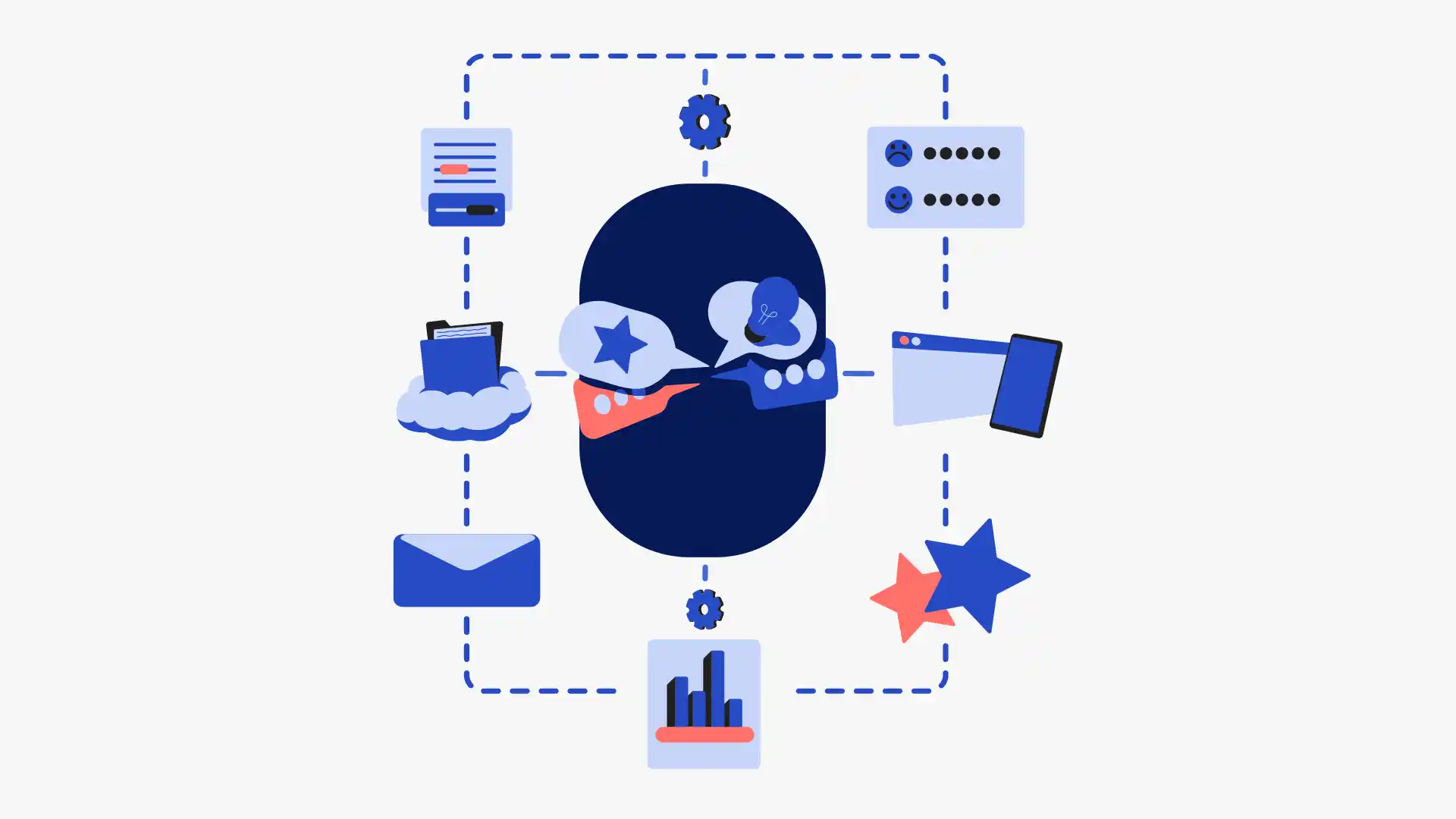
Worklife trends 2024
The world of work is in a constant state of flux, with each passing year bringing about new trends and innovations that shape the way we work, interact and live. From the integration of Virtual reality to a shorter workweek and the continued impact of the pandemic, here are the work-life trends you need to know about.
Global and remote talent acquisition
Companies are increasingly open to hiring remote talent from anywhere in the world. This trend is leading to more diverse and geographically dispersed teams, enriching the talent pool and promoting innovation through diverse perspectives.
AI-powered productivity tools
Artificial intelligence and automation continue to be integrated in the workplace, assisting with tasks such as data analysis, customer support and scheduling. These AI-powered productivity tools enhance overall efficiency, allowing employees to focus on higher-value tasks that require creativity and critical thinking.

90% of people believe it matters how we feel at work.

90% of people believe it matters how we feel at work.
90% of people believe it matters how we feel at work, according to Indeed research. 49% feel their organisation is focused on measuring and improving well-being. Mental health support at work has taken on even greater significance, with companies offering a wider range of mental health resources and destigmatising discussions about mental well-being. As employees face ongoing challenges, fostering a supportive and understanding workplace is essential to maintaining productivity and employee morale.
Four days of work a week is achieved by eliminating non-productive activities.


Four days of work a week is achieved by eliminating non-productive activities.
A global shift to four days of work
The concept of a four-day workweek is gaining momentum worldwide. Trials have taken place in various countries, including the UK, Belgium, Sweden and Iceland. In 2023, this trend will extend to the US, Scotland, Ireland, Canada and New Zealand.
In the UK, a remarkable 86% of participating companies expressed interest in adopting a permanent four-day workweek policy. Employees are expected to maintain their workload while enjoying an extra day off.
This reduction in working hours is achieved by eliminating non-productive activities, agreed upon in consultation with employees and their supervisors. The four-day workweek promises improved work-life balance and increased employee satisfaction.
Hybrid work models: The new normal
The enduring effects of the pandemic have led to the widespread adoption of hybrid work models, in which employees split their time between remote and in-office work. However, this model presents challenges in scheduling and internal communication, necessitating advanced VR and digital tools to enhance corporate communication for remote employees.
Companies are investing in technologies to bridge the gap between remote and in-office workers, ensuring seamless collaboration and communication. This shift is likely to persist as organisations prioritise flexibility and adaptability in their workforce strategies.
58% of American workers had the opportunity to work from home in 2022.
48% of the workforce will continue to work remotely or in a hybrid fashion, says a survey from Omdia.
58% of Omdia’s survey respondents believe work-from-home has increased productivity.
0% of Tesla’s employees are allowed to work remotely.

New trends and innovations shape the way we work, interact and live.

New trends and innovations shape the way we work, interact and live.
“Quiet hire” and continuous learning
Lifelong learning has become a cornerstone of corporate culture as employees regularly upskill and reskill to stay competitive in a rapidly evolving job market. In 2023, forward-thinking organisations are embracing the concept of “quiet hiring” as a way to acquire new skills and capabilities without adding new full-time employees.
This involves encouraging internal talent mobility, offering specific upskilling opportunities, and leveraging alternate methods like alumni networks and gig workers to fulfil high-priority tasks when a new headcount isn’t feasible. By maximising existing talent and nurturing their growth, companies can remain agile in a dynamic job landscape.
982 billion USD (approximately) is the expected value of the AI recruitment market by 2029. 6.8% is the annual growth rate. As AI plays a more significant role in recruiting, ethical concerns are gaining prominence. Governments are scrutinising AI’s use in hiring, leading organisations to be more transparent about their AI practices, disclose audit data, and offer candidates the option to opt out of AI-led processes. This push for transparency ensures fairness and equity in the hiring process.
VR-developments signal a new era in remote work and collaboration.


VR-developments signal a new era in remote work and collaboration.
VR for work: Connecting in the Metaverse
Virtual reality (VR) is taking the corporate world by storm. Unlike traditional video conferencing, VR allows employees to inhabit the same virtual space and manipulate reality data in real-time, creating an unparalleled level of global connectivity. This technology is set to reshape the future of our digital experiences.
In practice, VR is being used across various industries. NASA and armed forces are utilising VR for training, reducing risks and costs. Retail giant Walmart leverages virtual simulations to prepare employees for high-pressure events like Black Friday. Meta is actively promoting VR experiences aimed at enhancing workplace inclusion.
Meta has introduced Horizon Workrooms, a virtual working environment that facilitates collaboration. Nvidia’s Omniverse is being marketed as a metaverse platform, and Microsoft’s Mesh adds avatars and mixed reality capabilities to Microsoft Teams. These developments signal a new era in remote work and collaboration.
[Sassy_Social_Share]
A new era for photo journalism
A new era for photo journalism
Today’s photojournalists must be full-service suppliers in the digital visual field. It’s a change that creates much more breadth and depth. Photo editor Espen Rasmussen reflects on how the job has changed during the last decade.
By Espen Rasmussen | Watch t 10 years in pictures

A new era for photo journalism
Today’s photojournalists must be full-service suppliers in the digital visual field. It’s a change that creates much more breadth and depth. Photo editor Espen Rasmussen reflects on how the job has changed during the last decade.
By Espen Rasmussen | Watch 10 years in pictures
Two years ago, I stood on deck aboard the ship Geo Barents, operated by Doctors Without Borders, to document refugees attempting to cross the Mediterranean in inflatable dinghies. Thousands drowned, many were rescued and brought ashore in Italy, while others returned to the north coast of Africa.
I met 17-year-old Zalman, who on his tenth attempt at crossing was finally rescued.
At the age of six, he was orphaned and forced to live on the streets of the Somalian capital Mogadishu. He later fled to Libya, where he was captured by traffickers and tortured. Finally, he made it onboard the inflatable boat, ready to cross the Mediterranean.
A digital special in VG
The story of the rescue and of 17-year-old Zalman was published as a major digital special in VG. With videos, audio, photographs, graphics and text. It was presented in several chapters, adapted to the mobile phone.
In many ways, this story represents the evolution of photojournalism.
Today, stories are told using all the tools in the toolbox. In addition to photography, film is essential. Video adds something extra to the story when it’s presented digitally. It provides presence and emotion. Several of today’s photojournalists also supply text, and they are able to piece together the digital stories in the publishing tool of choice.
Photojournalists have gone from being classic photographers to now serving as suppliers across a much broader area.
Out in the field, it’s about being able to master photography, film, sound, drone use and interviews. And for breaking news, you should be able to broadcast live TV.
Back at the office, it’s about being able to master a number of tools for editing, have insight into how the content management system works and collaborate closely with developers and designers.
We need a plan
We’ve gone from working with individual images for print media to now relating to the fact that almost 90% of all journalism in VG is consumed on mobile phones. For photojournalism, this means that photographers must already have the story in mind before they leave the office, to a greater extent. We need to have a plan for how we want to tell it.
Today, photography is as much about journalistic content as it is about giving digital stories a visual boost and getting readers to scroll on.
The story of 17-year-old Zalman and the refugees attempting to cross the Mediterranean has been forever burned in my memory. And it also serves as an example of how today’s photojournalists must be full-service suppliers in the digital visual field. It is a change that creates much more breadth and depth, makes us much more versatile photographers and, not least, results in more impactful photo stories that touch our readers.
[Sassy_Social_Share]

Espen Rasmussen
Photo Editor, VG Stories
Years in Schibsted: 17
My favourite song the last decade: Golden Ticket – Highasakite
A decade of change
A decade of change
The report you are about to read is the tenth edition of Schibsted’s annual outlook on trends within tech, business and people. And as we celebrate this anniversary it’s only natural to reflect upon the myriad transformative events and innovations that have changed the digital landscape and the way we view the world.
By Kristin Skogen Lund, CEO Schibsted
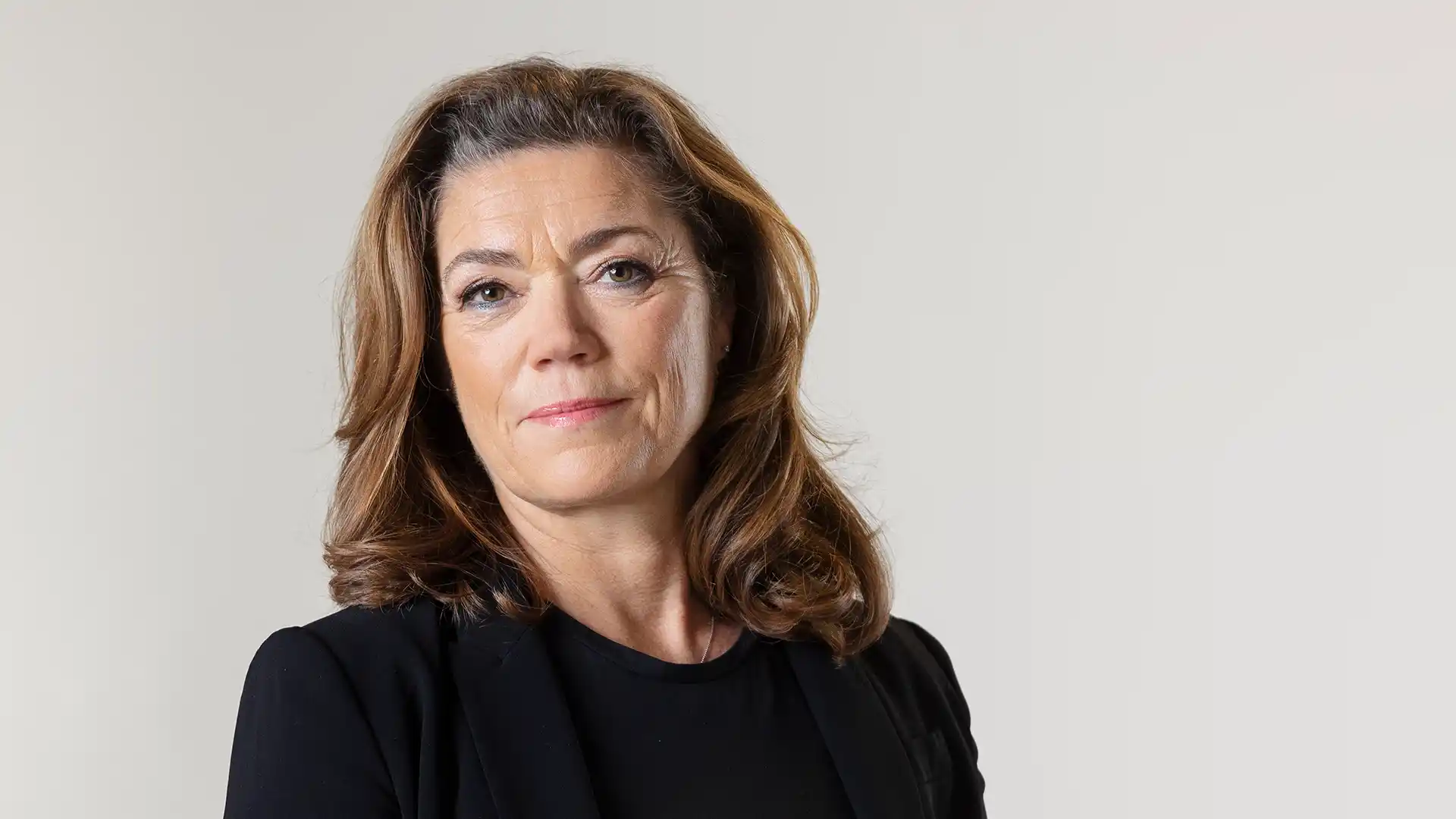
A decade of change
The report you are about to read is the tenth edition of Schibsted’s annual outlook on trends within tech, business and people. And as we celebrate this anniversary it’s only natural to reflect upon the myriad transformative events and innovations that have changed the digital landscape and the way we view the world.
By Kristin Skogen Lund, CEO Schibsted
In the span of just a decade, the digital age has grown in breadth and depth. We’ve seen the steady rise of platform economies and Big Tech. Streaming has replaced traditional forms of entertainment, rendering DVD collections to the realm of nostalgic relics. With e-commerce and direct-to-consumer trends, brick-and-mortar stores are increasingly replaced by virtual storefronts. Meanwhile, 5G technology promises speeds and connectivity that seemed impossible just a few years ago. Artificial intelligence and machine learning no longer belong to the world of science fiction but influence our daily lives. And of course, the pandemic that sent shockwaves across the world also revolutionised remote work and digital collaboration.
Yet, amid the dizzying pace of technological and societal change, a singular truth remains: the undeniable need for high-quality and trusted actors in society. This axiom holds particularly true in the world of news media, journalism, online marketplaces, and digital services – the very core of Schibsted’s operations.
At a time when anyone, in principle, can be both a content producer and a content distributor, the integrity and credibility of news sources become paramount. The rise of ‘fake news’ claims, deepfakes, and misinformation on social platforms underscore the need for authentic journalism. While innovations have allowed us to disseminate news faster and wider, it’s the credibility of the source that determines its impact. The fact that trusted and edited news media pay attention and report, enables us to trust our governments, institutions and societies at large.
Similarly, in the vast sea of online marketplaces and services, trust is our anchor. As consumers in the digital age, we face an abundance of choices. You can order just about anything in a few clicks. But this abundance of choice often leads to the paralysis of choice. Here, trusted brands and marketplaces shine because they allow consumers to trust transactions and trust complete strangers who are looking to buy their old car or sofa.
Why is this important? Because the high level of societal trust in the Nordics is one of the main reasons for our societies’ relative success in the world. Societies with high levels of trust and transparency are better equipped to deal with all the other major challenges facing us today. However, trust doesn’t sustain itself, and that’s where Schibsted can truly make an impact. We are committed to working for societies based on trust and transparency and we embrace the opportunities of technological change – always.
This serves as a good reminder that while our world keeps evolving, we remain true to our purpose. We embrace the new, the novel, and the next big thing, but we do so with a commitment to quality and trust.
Favourite song from the last decade
In this tenth edition all authors have chosen their favourite song from the last decade. Listen to them all on Spotify.
[Sassy_Social_Share]

Kristin Skogen Lund
CEO
Years in Schibsted: 5 as CEO of Schibsted, 6 as Commercial Director and CEO of Aftenposten 2004–2010.
My favourite song the last decade: Formidable – Stromae
Disrupting the pet care market
Disrupting the pet care market
FirstVet is a digital-first veterinary ecosystem, built with trust and passion, and designed to take patients from Doctor Google to diagnosis faster.
By Camilla Buch

Disrupting the pet care market
FirstVet is a digital-first veterinary ecosystem, built with trust and passion, and designed to take patients from Doctor Google to diagnosis faster.
By Camilla Buch
You’re at a cosy cabin in the woods, near a lake, with your beloved four-legged friend. The hustle and bustle of the city is hours away, and you’re eager to let the calming sound of water on sand wash away the stress of the week. Suddenly, there’s a yelp. Or a cough. Or a strange absence of noise from your pet. What do you do? The nearest veterinarian’s office is hours away, but you need help now.
That’s the kind of scenario that inspired the founders of FirstVet, a digital vet service that is “built for pet parents by pet parents.” While it started with content sites – forums amassing the collective knowledge of Sweden’s pet owners – the advent of digital healthcare services would change the founders’ approach.
“All our founders have pets and are invested in an active lifestyle with their pet,” says Rebecca Crusoe, CMO at FirstVet. “And since most of us at FirstVet are pet parents and we know first-hand how worried you get when your pet gets sick or hurt, and how complicated and expensive getting care for your pet can be.”

Stefan Palsson, Chief Operating Officer, Rebecca Crusoe, Chief Marketing Officer and Rebecca’s dog Paddy in FirstVet’s office in Stockholm.

Stefan Palsson, Chief Operating Officer, Rebecca Crusoe, Chief Marketing Officer and Rebecca’s dog Paddy in FirstVet’s office in Stockholm.
Shift in the market
Over the last 30 years, there has been a shift in the veterinary profession – much like the shift in the retail market. There used to be privately-owned clinics, like corner shops, that were easily accessible for most local, value-driven pet owners who are passionate about animal health.
The market today, especially in Sweden, has mostly been consolidated into a few veterinary giants that have acquired smaller clinics and put more focus on large, inner-city veterinary hospitals capable of more advanced – and more expensive – animal care.
“A veterinary visit costs an average of 2,000-3,000 SEK. These rampant costs are due to the giants cornering the market. That’s a model we actively want to challenge.”
One way FirstVet is doing that is by creating a less stressful working environment for their employees.
The customer journey often begins on Google, where you often find a lot of conflicting information.
“Being a veterinarian can be emotionally demanding, requiring you to be compassionate while also making tough calls. It also often requires you to work when many others don’t, which can make it difficult to achieve a good work-life balance. Much like in the human health profession, it’s an industry already on its knees,” says Crusoe.
FirstVet offers their veterinarians a more flexible solution in which they can work from home or combine their clinical work with a digital-first approach. Employees are required to have experience working in a clinic, and many choose to work in their own clinics while supplementing digitally with FirstVet. This also enables employees to take time off. Often, the peak seasons for vets are holiday seasons, when the owners are more likely to be at home, especially in the summer when physical clinics are closed. This model has the added benefit of bringing down costs for the clients.
Veterinarian Charlotte Schildmeijer working from FirstVet’s office in Stockholm.


Veterinarian Charlotte Schildmeijer working from FirstVet’s office in Stockholm.
Working with insurance
Another part of the FirstVet ecosystem is the insurance companies. One of the company’s goals has been to work preventively to decrease the number of emergency cases. By teaming up with the largest insurance companies early on and allowing them to offer FirstVet’s services to their clients at no additional cost, more pet owners are asking for help in time, eliminating the need to go to a veterinary hospital.
Pet owners Manfred and Åsa experienced this first-hand when their rottweiler Kito started to limp and lick his hind paw. After calling their closest vet clinic and being referred to their helpline, they were put on hold, last in a line of 125 other worried pet owners.
That’s when Manfred realised that through Kito’s insurance, they had received an offer of free digital care at FirstVet.
“I went online and booked an appointment straight away. While I waited, I answered a few questions and took pictures of the paw to prepare for the vet.”
After 45 minutes, the vet called and informed them that Kito suffered from furuncle, an abscess caused by an infection of the skin, and how it should be treated.
“We’re looking to disrupt, to challenge old truths and at the very least be a driving force in mending what’s broken in this business,” Crusoe says, adding that they aim to be the first contact for any pet owner.
FirstVet differs from vet clinics offering emergency care because they mainly want to work preventatively. They now operate all hours of the day in seven countries, providing information and helping their customers take an active part in the health of their pets.
According to Crusoe, around 60% of the people calling FirstVet get the help they need in just one call because many pet owner concerns are related to bowel issues, skin problems and runny eyes. These are clear and simple symptoms that rarely need clinical assessment.
Battling misinformation online
To make the experience as seamless as possible for the pet owner and to create an additional revenue stream, FirstVet launched a shop and recently opened its own pharmacy. Their goal is to make sure that patients entering the FirstVet ecosystem are helped the whole way through, especially for people owning pets for the first time. FirstVet saw a lot of new pet owners emerge out of the pandemic, as people’s priorities and possibilities changed.
“We really saw a big boost in pet ownership –especially in the UK where lockdown went on for months on end,” adds Crusoe.
She also explains that with the sheer mass of misinformation, it’s important for FirstVet to act as a myth-buster of sorts. A large part of their clientele is the forward-leaning, information-seeking type of pet owner – the proactive pet parent.
But trying to find reliable information on the internet can be difficult.
“We’re seeing a lot of misinformation spreading on social media. One example is that you shouldn’t cool down a warm dog with cold water during summer because it could lead to gastric volvulus – which isn’t true at all,” she says.
“Because of our start on content sites and forums, we know that the customer journey often begins on Google, where you often find a lot of conflicting information. We want to be your trusted voice in all avenues of pet care, whether you’re looking for a vet to talk to or a new brand of dog food. So, if you start asking Doctor Google about symptoms or products, you’ll soon find us,” Crusoe concludes.
Fact
2016 is the year that FirstVet was founded, in Sweden.
2021 the e-commerce business started.
2023 Schibsted invested in FirstVet to help them with market penetration in the Nordic markets.
FirstVet is established in Norway, Denmark, Finland, Germany, the UK and the US.
[Sassy_Social_Share]

Camilla Buch
Communication Manager, Schibsted
Years in Schibsted: 3
My favourite song the last decade: Chronically Cautious – Braden Bales
Meet Our People 2024: People
Meet some of our people
Michał Domagalski has found a way to keep his tech competence after becoming a manager. Nina Hermansen is working to improve women’s health and Karen Gonçalves is eager to get new employees a great start. Meet three people in Schibsted who are engaged in the working environment.
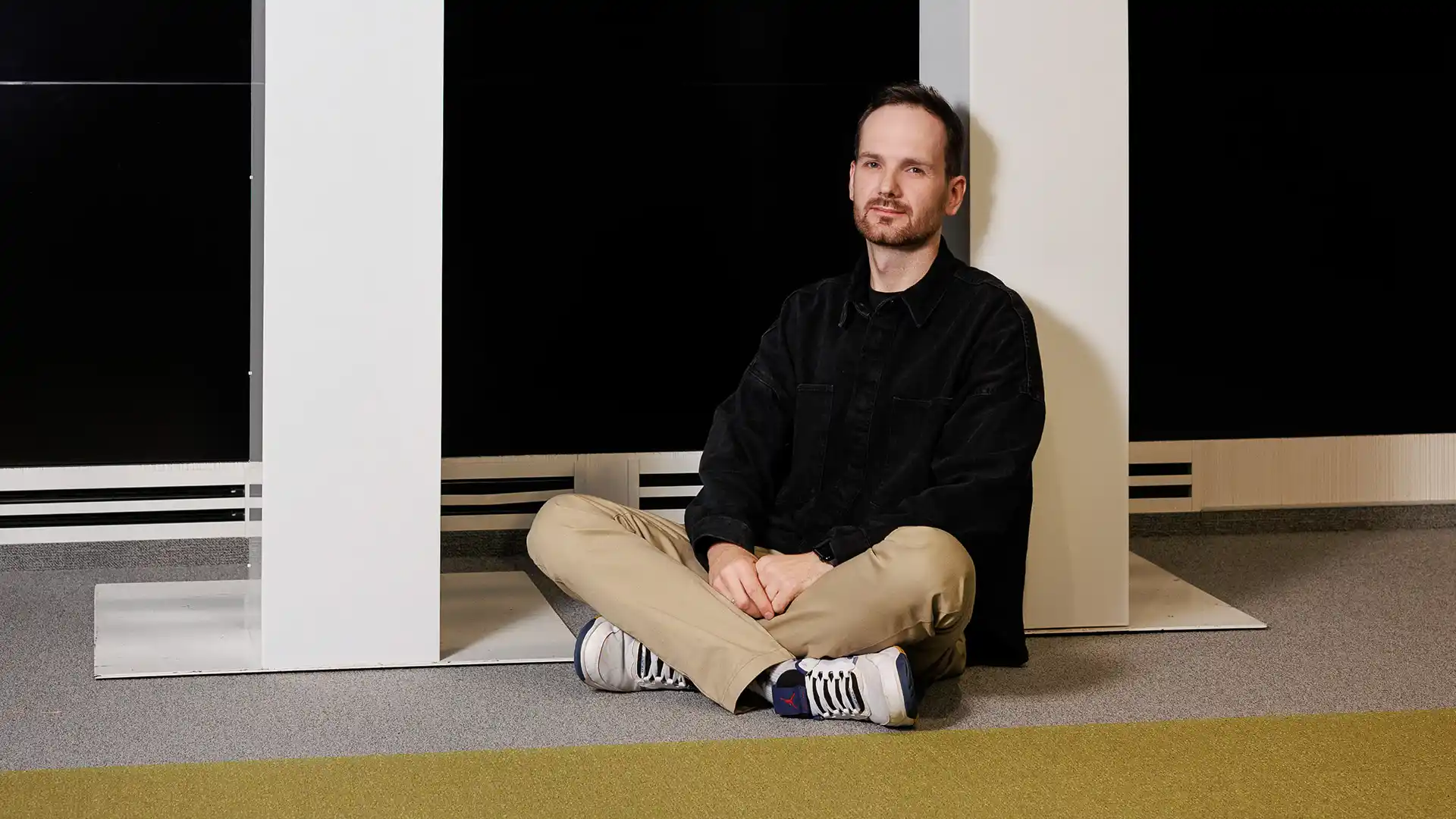
Meet our people
Michał Domagalski has found a way to keep his tech competence after becoming a manager. Nina Hermansen is working to improve women’s health and Karen Gonçalves is eager to get new employees a great start. Meet three people in Schibsted who are engaged in the working environment.
Keeping up with tech as a manager
“When I started to work as a manager two-and-a-half years ago, I had the ambition to keep on coding 50% of the time. That very soon turned out to be impossible,” says Michał Domagalski, Engineering Manager for Schibsted in Krakow.
This made him start thinking about how tech managers can keep up their tech competence, also to offer better support to their teams.
“Being a coder is a very uninterrupted job. But it’s the opposite when you become a manager; it’s a totally different pair of shoes, and it’s easy to lose track of new trends and approaches.”
As he thought about this, Michał ended up identifying things other than coding that managers could do to keep their tech skills.
“For instance, you can find a tech buddy to discuss problems with, who can inspire you and boost your energy,” says Michał. “Your team can also help you if you encourage and facilitate discussions. Being a good listener can help you grow.”
And, of course, reading is great. Documentation and staying updated on architecture and tools are important.
“Everything that’s new will help you to stay on track.” Michał used to miss coding, but not so much anymore.
“Today I feel close to tech, even without coding, thanks to discussing and brainstorming with colleagues.”
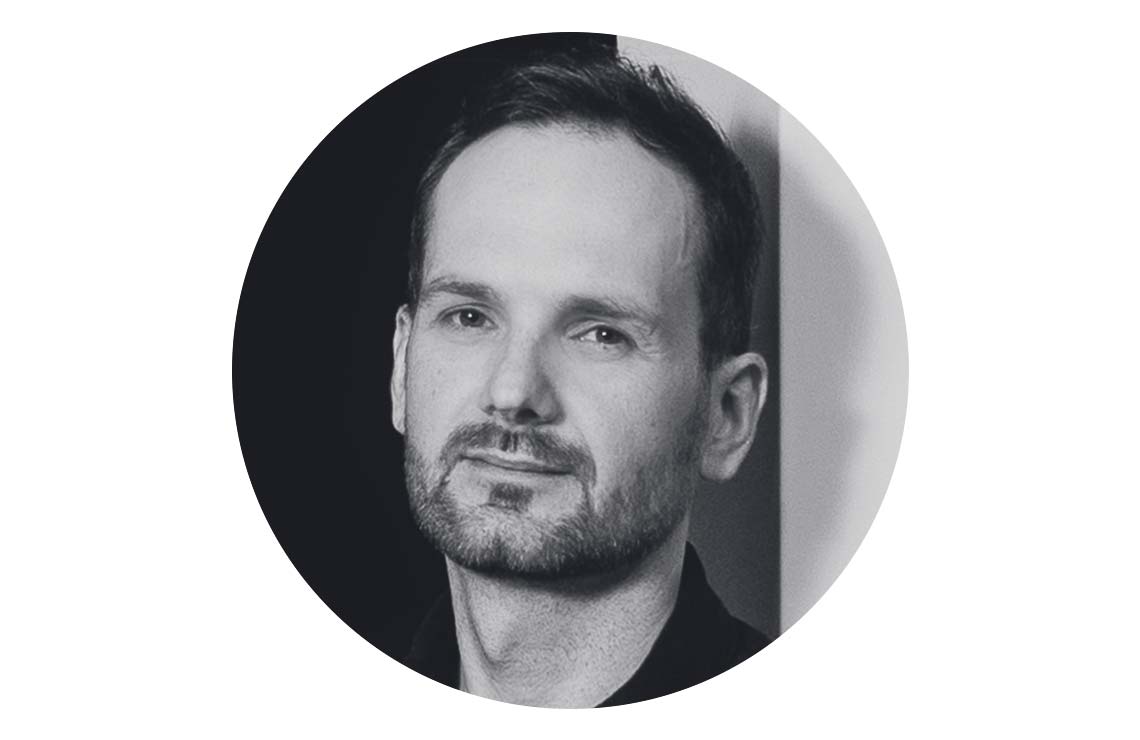
Michał Domagalski
Engineering Manager, Schibsted
Years in Schibsted: 3.5
My favourite song: Downtown – Unto Others
Improving women’s health
In Sweden, 100 women working in Schibsted were given the opportunity to participate in a health screening as part of a pilot project. The scan focused on women’s health issues and symptoms related to the reproductive system.
“This is a part of a larger effort to help our female employees improve their health and, in the long run, create a more equal workplace,” says Nina Hermansen responsible for the project, which is run in cooperation with the femtech company EsterCare.
Many women who suffer from these kinds of complications don’t seek help. And sometimes the attitude is that it’s simply part of being a woman. But having severe pain every month during your period, bleeding heavily, experiencing symptoms of menopause or struggling to get pregnant are all things that will also affect you at work.
In the pilot project, the women get a digital screening, and if the consultation results in a recommendation for a physical meeting with a specialist, then Schibsted covers the cost of the initial appointment.
“All 100 screening opportunities were booked in less than 40 minutes. We also see that many of these women were referred to a specialist – so it’s clear that this meets an important need.”
If the result from the pilot project shows a positive effect, the ambition is to scale it to all of Schibsted.

Nina Hermansen
Leadership Developer, Schibsted
Years in Schibsted: 5
My favourite song: Black skinhead – Kanye West
A good start for new employees
As a new employee at Schibsted, you should know what to expect, what to do, have all your equipment in place and feel inspired when you walk in through the door on that first day of work.
This is the ambition of a global onboarding project Karen Gonçalves is working on.
“This is part of a larger, strategic HR goal to deliver user-friendly people services, combining user needs with technology,” says Karen.
For a large and complex company, this is not always easy to put in place. But, for instance, new employees can now access Workday – Schibsted’s HR tool – before their first day, where they will find information and receive messages.
“Everyone should have the same experience and a good first impression of how we work and collaborate.”
When it comes to managers, the key is to give them the right information at the right time, in an automated way. For instance, automatically reminding them to take the right actions when a new employee is starting. A new micro-site is also in place where managers can find helpful information about how to welcome their newest team members.
“But this is just the foundation,” Karen explains. “The next step is to build an onboarding journey for new hires where they can learn more about Schibsted’s history and the entire Schibsted ecosystem.”

Karen Gonçalves
Global Process Owner – Employee On/Offboarding, Schibsted
Years in Schibsted: 2
My favourite song: Lady – Modjo
[Sassy_Social_Share]
Understanding a world on fire

Understanding a world on fire
A war in Europe and polarised societies have set the world on fire and shaken democracies. As individuals, we have a whole new security situation to relate to. Malin Ekman, a US foreign correspondent, also reflects on the role the media have played in these new developments.
There was a time when many risks in our corner of the world felt so hypothetical, and many discussions so abstract, that it was easy to ask oneself: “When is something going to happen?”
That time has now passed. When Putin invaded Ukraine, we were confronted with the world’s destructive uncertainty, as if world history cracked down on us, taken our temperature, and heralded a ruthless, unstoppable future where nuclear threats could no longer be dismissed and where gas pipes could be blown up.
A ticking bomb
The last time I felt like that was on 9/11. I was 14 years old and on a family holiday in Phuket, my first trip outside Europe. We were staying in a basic apartment hotel. Mum turned on the TV set in the living room. Images of the planes colliding with the twin towers were shown over and over. I remember thinking that Thailand felt reassuringly distant, even though it seemed as if the whole world had been compressed into a ticking bomb.
That same feeling returned this spring.
My friend and colleague Per Bjurman from Aftonbladet says he intends to stand on his balcony on the 48th floor when the missiles come. If it happens, he says, we should be glad if we die; no one will survive such an apocalypse. He knows exactly how many minutes it takes for a nuclear warhead to reach Manhattan from Russia (30) and the destructive impact of a modern nuclear weapon (100 times greater than that of the Hiroshima bomb).
This says something not only about the neurotic nature of our friendship but also about the uncertainty the world is struggling to get accustomed to. It was Per who told me about the invasion. I was heading for Orlando on a plane with a lousy internet connection when I received his message: “Oh no, Russia’s attacking Kyiv now!”
It had seemed so unlikely only a few hours earlier. Friends back home sent messages to the effect of thank goodness Trump isn’t president when this happens, at least; there’s no telling how things would turn out then. In the United States I heard acquaintances and interview subjects say that if Trump had still been president, Putin might not have dared to invade.
Both are pushing America first
While both analyses have their merits, it’s important to remember that the geopolitical differences between Trump and Biden are relatively small. Both are pushing the “America first” message.
The US withdrawal from Afghanistan, initiated by Trump and implemented by Biden, demonstrated how seriously the US took that slogan. Afghans clung to aircraft wings out of fear of being left behind in a country where, every day, people were being stripped of the rights that had slowly being secured for them under US control. Everyone was asking themselves: “Is this what American foreign policy looks like?”
The war in Ukraine complicated the answer to this question. The US was not ready to intervene at the cost of a third world war, but nor was it prepared to stand by and leave a country being invaded by a world power to its own fate. It sent weapons and imposed sanctions and formed a united front with the other Western nations.
But even though it was unprecedented, some important perspectives were lost in the way the incident was reported.
The months come and go, and for those of us who don’t have to live under constant physical threat, the fear is cyclical. One move by Putin, and the sense of security is ripped away. One threat of nuclear weapons – be it direct or indirect – and the fear returns. The geopolitical situation is so alarming and at the same time so fascinating that it’s almost easy to forget the domestic political polarisation here in the US. That, too, is prompting legitimate fears about what type of world will emerge; a polarisation which in many ways is leaving its mark all over the world and is evoking fear and concern for where our world is headed.
The storming of the Capitol is a low watermark in contemporary US history. But even though it was unprecedented, some important perspectives were lost in the way the incident was reported, political parallels that help explain why it could happen.
Comparisons with the claims made by Hillary Clinton and parts of the Democratic Party establishment that Trump’s 2016 election win was illegitimate are often dismissed as unfair, but they are important for understanding the political dynamics at play.
Effecting faith in democracy
Hillary Clinton conceded the election without urging her supporters to storm the Congress and stop Trump, though she did dismiss her opponent as an “illegitimate president” and claimed “he knows” that he stole the election.
The accusations were put forward in more sophisticated ways and without directly or indirectly agitating violence, but still they have as much significance for the American people’s faith in their democracy as they do for the populist right wing’s argument of a corrupt elite throwing stones from glass houses.
It didn’t help that parts of the years-long reporting on Trump’s alleged collusion with the Kremlin – which won The New York Times and The Washington Post a joint Pulitzer Prize – proved to be based on idle rumour and false information. Or that Hillary Clinton helped fund the report from which much of that information came. This passed relatively unnoticed, but revelations about the news media’s shortcomings are important for understanding the resentment towards them and how they feed polarisation.
Many didn’t report
The social media platforms also play a key role. After allowing the spread of disinformation in the 2016 US presidential election, Facebook assumed an almost self-flagellating role in the 2020 election. In response to a request from the Biden campaign, it decided to actively suppress the story about the documents found on Joe Biden’s son Hunter Biden’s laptop; information which I had managed to have corroborated by a Facebook employee.
Several reputable media with high credibility in established circles chose not to report the story on the grounds that the information could not be verified. Others chose to dismiss it as disinformation; a precaution that wasn’t taken in the Pulitzer Prize-winning reporting on Russia.
It’s harder to discuss the undermining of trust to which we in the media – sometimes routinely – contribute.
As journalists, we have a responsibility to reflect on our own role in these developments. It’s easy to talk about the undermining of trust which Donald Trump inflicts on democracy by disqualifying election results, but it’s harder to discuss the undermining of trust to which we in the media – sometimes routinely – contribute. The tendency to demonise and alienate rather than to understand and examine is also a price we pay for democracy, because it plays a part in dividing and agitating people.
A crass political game
In a panel discussion I recently participated in at the Swedish consulate in New York, a woman in the audience asked me: “How is it possible that so many elected Republicans seem to be ignoring the storming of the Capitol, as if they couldn’t care less?” It’s a relevant question.
As well as having to do with crass political games – even Republicans who detest Trump need to have the support of his electoral base – the answer has to do with the resentment at how the storming was portrayed and in what proportion compared to other news items.
For those who seem to ignore the storming, it’s almost as bad or even worse that Democrats turned a blind eye when, in the wake of the murder of George Floyd in the summer of 2020, a radical left vandalised cities, tore down barricades and set fire to police vehicles. They even occupied entire blocks and forced the police out of their own buildings.
More at stake
Still answering that woman’s question: The hate for the other side runs so deep that we forgive our own side’s mistakes. It’s human nature and, at the same time, a form of combat psychology, a dynamic similar to that found in global conflicts. The drama playing out in the world is putting more at stake; the question is no longer: “When is something going to happen?”
For my own part, I find it hard to imagine that I won’t relive the claustrophobic fear I experienced in Phuket and on that plane to Orlando, the one that comes with the feeling that the world is spinning out of control. As an individual, that’s a private matter
I have to deal with myself. As a journalist, it’s something bigger. Our responsibility is to communicate what we see with curiosity and consequential neutrality, and to help our audience understand the world as it is rather than repeat how it is usually presented.
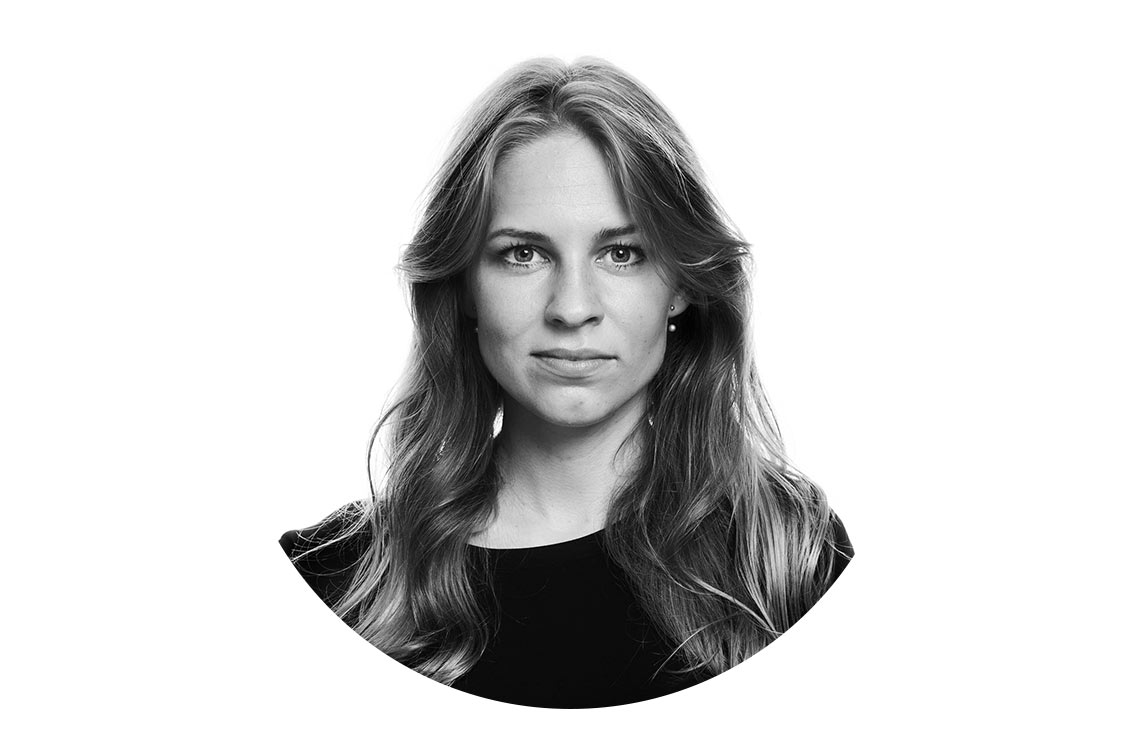
Malin Ekman
US Correspondent, SvD
Years in Schibsted: 13
Not in my backyard
Not in my backyard
With an energy crisis in Europe, as an effect of the war in Ukraine, the importance of power has never been more evident. But as new sources of energy emerge – old obstacles appear. Protests are stopping new projects.
Everything was different,” said my grandfather the last time we spoke. That was in the summer of 1999. Napster had just been launched and the war in Kosovo was coming to an end – as was my grandfather’s life. I was sitting by his bedside and had just asked him what the world was like for him as a child, living by a small fjord on the west coast of Norway almost 100 years ago. He paused for a moment, thinking. “We had no cars,” he said. “No planes, no TV. No radio, either.”
He didn’t mention the internet. He may have heard of it, but it never featured in his life, which might sound staggering to young people today. But then he said something even more staggering: “We didn’t even have electricity.”

Although wind energy may sound benign, the extent of human intervention involved is huge. A wind farm requires extensive land areas. Photo: Magnus Hjalmarson Neideman.
Everything really was different before
I tried to imagine what life was like in those days, in a small, dimly lit house on a gravel road, with the ocean down below and the smell of dried fish, tar and sheep dung in the yard. It was hard enough for a city kid like me who grew up in the seventies, but probably impossible for my own children.
One thing the technological innovations my grandfather rattled off have in common is that they have all accelerated social development. They have revolutionised transport, information and communication, speeded up the pace of globalisation, and pushed the world forward from societies built on agriculture, hunting and fishing to ones built on knowledge, industry, technology, innovation and import and export.
But there’s something else they have in common: they need energy, and lots of it. Only since the 1950s, energy consumption has increased fivefold, and the need continues to grow. And if there’s one thing we’ve learned in 2022, it’s this: abundant energy at reasonable prices cannot be taken for granted.
Energy in every drop
My home country of Norway has been blessed with a unique supply of energy for more than 100 years. At the beginning of the 1900s, someone realised they could derive lots of cheap electricity from the country’s thousands of waterfalls, and speculators with foreign backers travelled around the country buying up those waterfalls on a large scale. This was the backdrop for developing what became known as the “panic laws”, a set of new laws that gave the state control over the country’s natural resources.
Much later, at the end of the 1960s, oil and gas were discovered on the Norwegian Continental Shelf. Once again, the Norwegian state made some smart moves, and Norway gradually became self-sufficient and stinking rich on fossil and non-renewable energy. For my entire lifetime, Norway has enjoyed cheap energy, so cheap that my generation burn their feet on heated bathroom floors and leave all the houselights on when they go off on holiday. But now, in 2022, even the energy nation Norway is facing an energy crisis. Other nations have also prospered oil and gas, among them Russia.

The green energy technologies we hear about so much – wind, solar and wave – account for just over 2% of global energy production. Photo: Magnus Hjalmarson Neideman.
Winter is coming
Over the past 50 years, Germany has made itself totally dependent on Russian gas. There’s been no lack of warnings; even president Trump warned against this dependence in a speech to the UN General Assembly in 2018, only to be met with laughter from the German delegation.
After the Russian invasion of Ukraine drove a huge wedge between Russian and Nato, it became clear that Vladimir Putin would leverage Europe’s dependence as part of his war strategy. By choking off energy supplies to Europe, he could try to pressure Western countries to lift sanctions against Russia. As an added bonus, he could expect divisions to arise among European politicians and capitalise on people’s fury at soaring electricity prices. He could destabilise and undermine his opponents.
Energy rationing
Towards the end of the summer of 2022, the Nord Stream 1 gas pipeline, which carries most of Russia’s gas to Europe, was shut down for a few days of maintenance. Germany responded by reactivating its environmentally unfriendly coal mines to make up for some of the supplies lost. But it wasn’t enough. The dry summer had made it difficult to ship coal by river transport. Similar problems arose in the United States and China. The industry was hit by energy rationing, and European leaders wearing solemn expressions warned of a cold winter ahead for most people.
Putin didn’t reopen the gas pipeline; he would rather burn it all up than export it to Europe. Then there were the explosions of the Nord Stream 1 pipelines, late September. They did not affect the amount of gas being delivered, and whether they are part of Putin’s strategic plan, remains to be seen. But they certainly made the geopolitical tension grow even more.
Norway – the largest supplier
At this time, Norway was all of a sudden the largest supplier of gas to the European continent. If the underwater pipelines from Norway to the continent would blow up too, that would mean a cold and dark winter in Europe. On the verge of winter 2022, Russian citizens are being arrested along the Norwegian coast, flying drones with high-tech cameras over critical infrastructure.
Again, we do not know if this is organized espionage. But it sure illustrates the tense situation. Even with increased energy supplies from Norway, energy rationing seems inevitable. There’s simply not enough energy to meet Europe’s needs. European leaders have begged little Norway for more energy supplies, but Norway already supplies one-fifth of EU’s gas imports and is unable to deliver much more.
Moment of truth
When the war is over, few countries will have any confidence whatsoever in Russia as an energy supplier. Europe is determined to increase its energy production to make itself less dependent on Russia, but it’s impossible to make up for the loss of the Russian supplies in the short term.
Norway’s hydropower also supplies a lot of energy to Europe, but the levels in Norwegian water reservoirs haven’t been lower for 25 years. Even when it does rain, it’s not enough; the soil around the reservoirs is so dry that it absorbs whatever it can. The same applies to the rest of Europe in the wake of a record dry summer.
The European energy system is deficient and vulnerable. Everyone can see that, not least the Russian authorities – and they’re exploiting it. So, what should Europe do now?
Growing need
According to the EU’s European Environment Agency, (EEA), Europe’s energy consumption will be 11% higher in 2030 than it was in 2005. but the need for energy development in Europe exceeds that. When Russian supplies fail, Europe must undertake colossal development of its energy production. But how?
Everyone agrees that the world has to shift from fossil fuel production. It’s absolutely vital if we are to slow down global warming and everything it brings with it. On top of that, fossil fuel is one of the main sources of air pollution, which according to a recent study kills 6.5 million people annually. That’s about as many as the number of people who died as a result of the COVID-19 pandemic in the course of two and a half years.
According to 2021 statistics from the International Energy Agency’s (IEA), oil accounts for 30.9% of global energy production, coal for 26.8% and natural gas for 23.2%. That amounts to over 80%. Biofuels and waste, nuclear and hydro make up the rest. The green energy technologies we hear about so much – wind, solar and wave – account for just over 2% of global energy production.
The EEA expects fossil fuel to dominate for a long time to come, but that’s not where the growth is happening; 60% of the growth in this period will come from renewable energy. So what will the energy market look like in a few decades from now?

Norway has been blessed with a unique supply of energy for more than 100 years. At the beginning of the 1900s, the country’s thousands of waterfalls were bought up on a large scale. Photo: Magnus Hjalmarson Neideman.
New energy generation
A lot of research is looking at new forms of energy production, and there’s no shortage of good ideas. For example, the energy that solar winds hurl into space can be harnessed. On farms, cow manure and food waste can be decomposed and provide fertiliser for the soil and gas to power generators, or streets, squares and buildings can be laid with tiles that generate energy when people walk on them. Some researchers are looking at how to turn sewage into biofuel, others at how to do the same thing with algae. Clean hydrogen.
Systems are also being developed that will change how energy is distributed. For example, a new city district could have solar panels installed on all the building roofs – and in the walls for that matter. The energy from the panels could be stored in batteries. If an excavator cut a power cable from a large power plant outside the city, the power supply to that district would not be affected. It could distribute power between the buildings or even sell it. Systems like these could reduce the need for large-scale central power plants.
Combined, the newest technologies may make a valuable contribution to the overall problem, but so far none of them can generate enough energy to meet increasing needs. That situation may change, but the need for the more conventional forms of energy production will not disappear for a long, long time.
Back to the core
“The time of nuclear renaissance has come,” said French president Emmanuel Macron in February 2022. He promised to build 14 new large-scale nuclear power plants in addition to a number of small new-generation reactors. The workers he was addressing (this was two months before the presidential election, the high season for making election promises) applauded. Unlike wind farms, nuclear power plants mean jobs; first to build them, then to operate them.
But not everyone welcomes the nuclear renaissance. Many nature protection organisations are fighting it tooth and nail, and understandably so, given the serious impacts of the accidents at Chernobyl and Fukushima. Moreover, radioactive waste from reactors poses a major and potentially hazardous problem. Many critics also point out that building a nuclear power plant takes years and that maintenance is costly. Moreover, the unusually warm rivers in France this summer made it difficult to cool reactors.
On the other hand, emissions from nuclear power plants and land use requirements are minimal, and they generate significant amounts of energy. For those reasons, the UN’s Intergovernmental Panel on Climate Change (IPCC) and the International Energy Agency (IEA) believe they can’t be avoided if we want to achieve net zero emission targets.
That said, even the strongest supporters of nuclear power have to admit that the world needs other technologies, too, simply because the plants – unlike alternative technologies like windmills – take too long to develop.
Winds of change
Climate change agreements are key drivers of development, but profitability can hardly be overestimated.
There’s no doubt that renewable energy will grow significantly. It’s already attracting investors, and research and development financiers are now eyeing the potential to make huge profits at some point in the future. They seem to be particularly interested in five different energy sources: hydro, wind, solar, biowaste and geothermal energy.
If I were to invest in an energy production plant, I would want to know which technology can produce the most energy (revenues) over time for the total cost of building, operating and maintaining it (expenses). Or to put it another way: how to get the most energy for my money. This is called LCOE, or levelised cost of energy.
In the summer of 2021, the World Economic Forum concluded that renewable technologies are now also the cheapest, and that the costs are continuing to fall year on year. The difference can be further widened with tax incentives and the like. This means the old coal power plants and other fossil fuel sources would lose their competitiveness.
Offshore wind energy looks very promising, but the technology is still expensive and immature. The most profitable technologies right now are solar and onshore wind, which – unlike nuclear power plants – can be quickly developed. If the coal mines are shut down at the same fast pace at the same time as new nuclear power plants are built, there is still a chance of reaching the net zero emission target in 2050.
But there are many who are tilting at windmills.
All energy production entails human intervention
Although wind energy may sound benign, the extent of human intervention involved is huge. A wind farm requires extensive land areas. On top of that come the concrete, metals and minerals needed to build the windmills and the foundations they stand on.
Indeed, in 2019 wind energy was the subject of one of Norway’s most heated energy debates. A wind farm was to be developed on Haramsøya in Sunnmøre. The developer had been granted the necessary permit, but the local community (and gradually environmental activists from all over the country) protested against what they rightly called a destruction of nature. They sabotaged construction work, chained themselves to construction machinery and took legal action to stop the development, but to no avail.
The demonstrators on Haramsøya are part of a growing international trend. They are not necessarily opponents of wind energy (though some are, arguing that Norway should continue to invest solely in oil and gas); they just don’t want to have the windmills in their local community. Protest movements like these are referred to internationally as NIMBY (“not in my backyard”). Canada has seen a number of NIMBY actions against wind energy developments in Nova Scotia. Similar actions have been carried out elsewhere, from Australia to Florida. Everyone wants renewable energy, but no one wants it being produced in their neighbourhood.
If my grandfather were still alive, he could have looked straight out at the 150-metre-high windmills on Haramsøya. Perhaps it’s just as well he was spared from that.

Joacim Lund
Technology commentator, Aftenposten
Years in Schibsted: 17
Welcome to the sustainable future

Welcome to the sustainable future
While climate goals seem all the more hard to reach, experts say we need concrete narratives to show us what a sustainable future might look like. We need stories that explain what roles we as individuals can play – meet Ester in Stockholm 2050.
It’s the 1st of July 2050 and the sun is rising. Sunlight is slowly filtering through the reflective glass exterior, causing Ester to rub the sleep from her eyes. She asks her digital assistant for a cup of coffee before even getting out of bed, and hears the machine obligingly whir into action in the kitchen. We call our person of the future Ester. She is a fictional character who for research purposes is placed in a time and scenario where humans once again live sustainably and in tune with nature.
In Ester’s world the amount of global emissions has been halving every decade since 2020. Reports are published of sustainable food chains, improved water quality and balanced ecosystems. And the planet is far from exceeding the 1.5-degree global temperature by 2100.
But that century is still a long way off. The sunny day has begun, and draws attention to what lies outside the solar panel-clad windows. The timers in the kitchen tick away. The roof panels and the integrated solar panels that cover the facades and windows are all performing at full capacity.
“Should I work from home today or drive my electric bike or car to work?” Ester asks herself.
She decides to drive her small electric car, charged with self-generated electricity, to her hybrid office in the urban circle close by. Moving around the city is fast and easy because the traffic has been replaced by the new autonomous buses that provide a seamless shuttle service.
Everything within 15 minutes distance
In Ester’s city, no transport stretch takes longer than 15 minutes. Once known as decentralisation, this development is now regarded as commonplace. Little has been demolished to give the urban districts a chance to flourish; instead the catchword has been adaptation, and crops are now being cultivated on the rooftops side by side with solar panels.
“The 15-minute city” – isn’t that what they called it? Ester seems to recall reading about the model that was launched by Anne Hidalgo, mayor of Paris, even before the Covid-19 pandemic. But the fact that she has everything she needs within a 15-minute walk or bike ride is far from a matter of course.
Car with solar panels
Ester’s car has solar panels on its roof, and the car body serves as a battery. Sometimes the car sends power to the grid, other times it uses the power to top up the battery, functioning like a communicating vessel. The car is connected to the grid and can drive autonomously in the most energy-efficient and climate-smart way, but on this particular day Ester prefers to drive herself and take an alternative route because she has the time and the weather is so nice.
She enjoys the greenery. Large squares and asphalted surfaces have been replaced with rain parks and cloudburst ponds that can handle sudden precipitation events, while trees, bushes and other vegetation regulate the temperature. Tree crowns offer shade, water tables work together in a canal-like system, and fields and bushes are full of sounds of buzzing and chirping like never before.
Whatever is new has been created from reuse, and circular systems mean that very few resources now go to waste.
She laughs when she thinks about the manicured lawns of the past; so rigid, time-consuming and water-intensive.
In the small urban core where houses and small office complexes are concentrated, old buildings have been renovated and modernised. Whatever is new has been created from reuse, and circular systems mean that very few resources now go to waste.
Items can be borrowed
Basement storage spaces are full of batteries and communally owned items that can be borrowed, such as tools and various types of electric bikes. There’s also a small car pool for driving distances that are too long nonetheless. Courtyards and storage facilities have been specially adapted to accommodate hydrogen storage, among other things, and on this particular day they’re all full of self-produced green energy. The turbines in the wind farm in the distance are standing still, but what does that matter on a day like this?
Ester listens to the silence of the city post-electrification. The air is high and clear despite the 25-degree temperature. The wide walking and cycling paths make it easy for her to quickly move between her home and the shops, recreational areas, cultural events, gym and office, so she rarely needs her little car in her everyday life, but she likes to know she can just take off whenever she wants to.
Many small cores
When it comes to food shopping, Ester can use a transport bike with an electric motor or have it delivered to her home by a bike delivery rider or an electric truck that doesn’t need to drive so far when a large urban core is replaced by many smaller ones.
Ester dreams of taking the train to Paris for her holiday. The journey only takes a few hours now, and she has heard that Europe is greener and more beautiful than it has been for decades.
But right now Ester is planning a picnic with friends in a local park. She turns up the volume of the music in the car while a news broadcast tells listeners what it used to be like, specifically in the 2020s when almost 50% of young people said they didn’t want to have children on account of the climate crisis, and about when young people’s concerns about global warming, ice melting and severe weather events destroyed their dreams.
It’s a new era now.
Even if we don’t know what the future will be like and Ester is just a fictional figure, this story is an attempt to describe the best outcome of the sustainable development goals which the world’s leaders adopted in 2015 and which mean meeting the needs of the present without compromising the ability of future generations to meet theirs. Ester’s life may be idealistic, but it’s also a kind of vision, even though several of the planet’s limits have already been crossed.
We need narratives that make sustainability more concrete.
Now let’s return to our own time to meet Alexandra Nikoleris, associate senior lecturer, environmental and energy systems studies at Lund University, who has studied transition narratives, among other things. She believes that visions like the one about Ester have great value. “We need narratives that make sustainability more concrete so that we can write ourselves into narratives like these,” says Alexandra and adds: “A lot of research shows that most people today take climate change seriously and want something to be done about it but don’t know what, or what role they should play.”
That fact that we live in a narrative doesn’t have to mean that we can’t change it. The power of change lies in the narratives we choose to activate, believes author Mary Alice Arthur, who calls herself a story activist.
Another believer in the power of storytelling is Christiana Figueres, the lead architect of the Paris Agreement who now runs an organisation called Global Optimism. In her book, titled The future we choose: Surviving the climate crisis, she writes a story similar to the one about Ester, and in her most recent article she likens Europe’s dependence on Russian fossil fuels to a smoking lung cancer patient who starts up his own tobacco plantation rather than quit smoking.
The pace of transition is too slow
To reduce the cognitive dissonance, the inner conflict between what we know and how we act; that is where these stories fulfil a purpose. But she also realises that many will push back if the narratives are expected to result in restrictions on our freedom of speech.
“That’s why collective narratives often work best. That people share their experiences on trains and when cycling together, for example,” she says.
In an ideal world, Sweden’s vision is to become the world’s first fossil-free welfare nation, but a lot still needs to be done to achieve its climate goals and realise this vision.
The overall aim is to achieve net zero emissions of greenhouse gases into the atmosphere by the year 2045 and thereafter negative emissions. To have a chance to experience at least some of what Ester can enjoy after 2050, there needs to be an annual reduction in emissions of 6-10%.
“The pace of climate transition remains too slow, and current policy is insufficient for achieving the climate goals,” writes the Swedish Climate Policy Council in its 2021 report.
At slightly lower rate
But wait a minute – Sweden’s domestic emissions amounted to 46.3 million tonnes CO2 equivalents in 2020, representing a record reduction of 8.9% compared with 2019, which is well inside the government’s stipulated reduction range. The decreasing emission levels depend on lower generation of emissions from industry, domestic transport and electricity and district heating sectors, though, according to the Swedish Environmental Protection Agency, they also result from less activity during the COVID-19 pandemic.
Emission reductions in any one year do not diminish the greenhouse effect, either; the concentration of greenhouse gases in the atmosphere simply increases temporarily at a slightly lower rate than it otherwise would have. It is not until net emissions reach zero or are negative that the conditions will be in place to stop global warming. And to reach that point, global emissions would need halve every decade from 2020 in order to reach net zero by the middle of the century, according to the UN’s Intergovernmental Panel on Climate Change (IPCC).
The real world isn’t even close to Ester’s. There is no point in time when all the problems disappear, but despite the problems there are some possible solutions, a sustainable development, that is highlighted by the IPCC and the global sustainable development goals, among others things, such as:
- Replace fossil fuels with renewable energy and carbon capture and storage.
- Protect and expand the biosphere. Restore wetlands, forests and transition to sustainable regenerative agriculture and forestry practices.
- Transition from a linear to a circular economy. Complete the cycle. Reduce wastage and waste. Reuse and sharing economies.
- More equitable distribution of resources, energy and environmental space.
In a changed world like Ester’s, you can imagine that it’s easier to do the right thing. Ester knows that you can’t buy your way to happiness, just as no one would be happy if they just wore broadcloth and ate porridge all day.
According to researchers, the transition must result in maintained or improved quality of life if a sustainable lifestyle is to appeal to enough people and remain as sustainable over time. Other stories and realities must of course be taken into account, such as those of indigenous peoples and other groups of people and of places that are severely impacted by the exploitation or extraction of natural resources. A resilient future that can handle disruptions and still be further developed involves ecological, social and economic sustainability.
After the summer of 2022, when Europe was on fire, when temperature records were broken one after the other and when drought spread across almost half the EU – what are we supposed to think? And is this a result of the climate crisis?
Researchers, meteorologists and the media have long insisted that an individual weather event could not be linked to climate change, and sceptical voices have insisted that weather always varies.
Strong evidence of human influence
But in recent years a new research field has emerged: extreme event attribution. Using vast amounts of data, researchers can with greater certainty attribute individual weather events to global warming, or to put it another way, they can say how much a weather event can be attributed to human-induced climate change and how much to natural variations. And when it comes to extreme rain and heat waves, there is strong evidence to indicate that they are caused by human influence. The European Commission, acknowledging the seriousness of the situation, last year adopted a new strategy for adapting to climate change, since the impacts were already noticeable and adaptation to a warmer climate therefore had to happen sooner and be more comprehensive.
Resilience must be enhanced, and according to the IPCC, that is best achieved by countries meeting the emission targets they have set, but enhancing the resilience of cities and societies comes neither easily nor cheaply. The insurance industry in a number of countries has begun murmuring that while its business is to protect against disasters, it will be a totally different situation if the unexpected becomes the expected. “We cannot insure what we already know will occur,” says Staffan Moberg, a lawyer from the industry organisation Insurance Sweden and an expert in climate-related damage.
Now back to the future. Ester doesn’t think about commonplace things like sustainability and adaptation. She knows that the climate threat was considerable during the first decades of the 2000s, but it’s something she no longer gives much thought to because she’s busy enough living her own life. One day at a time. One step at a time. She runs her fingers through her hair, pulls down her sunglasses and hurries off.
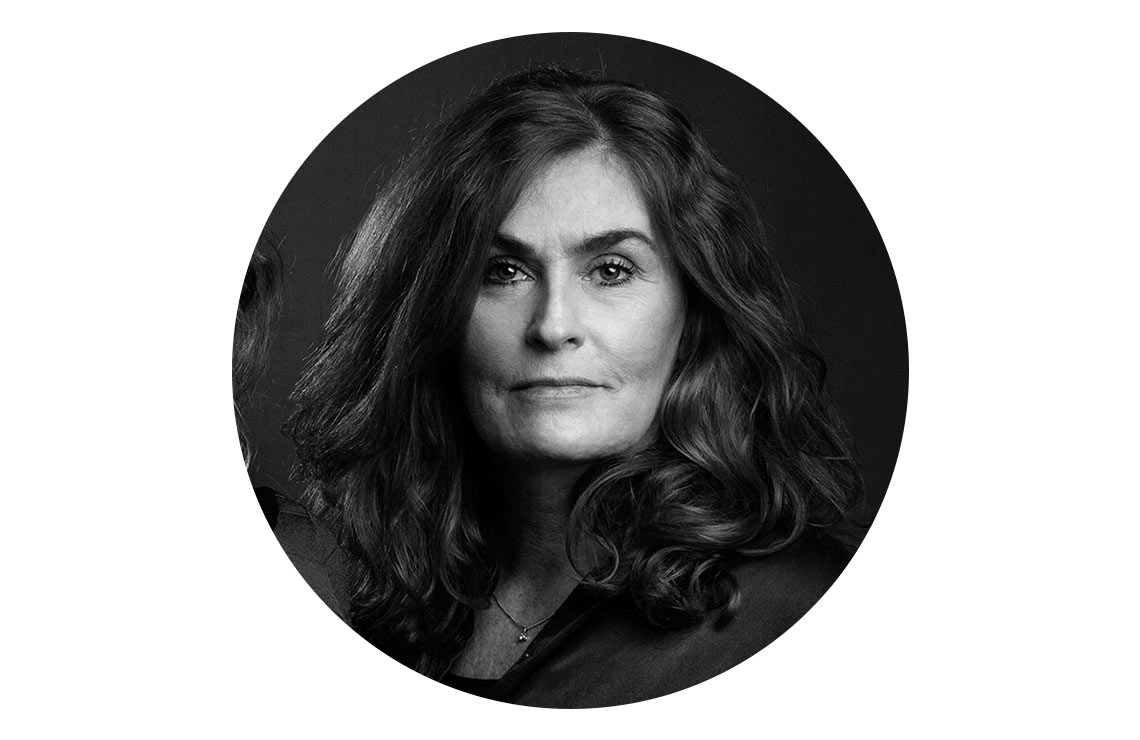
Erica Treijs
Reporter SvD
Years in Schibsted: 21
Meet our people: "I care for our contribution to society.”

"I care for our contribution to society"
“Talent is the foundation of success, so our people are, without a doubt, our most important asset,” says Grethe Malkmus, Schibsted’s new Head of People and Communication.
Grethe joined the company six years ago and has held a number of roles over the years, including Director of People at VG and in News Media. This has given her insight into Schibsted’s different brands and diverse cultures, as well as an understanding of the opportunities and challenges in an evolving employment landscape.
“It’s never been more important, or more challenging, to attract, retain and develop the talented employees we need in order to fulfil our purpose of empowering people and serving society.”
Economic uncertainty, increasing global competition and changing attitudes to work means that there is a need to focus on multiple fronts, like identifying the right talents and making sure to give them what they need, she explains.
“It’s a tough task, no doubt, but I can’t think of a better-placed organisation in our markets to address this.”
She mentions the learning opportunities within an inclusive workplace and career opportunities across the businesses as great options to attract and retain talents.
“In my heart, I truly care for the success of Schibsted and our contribution to society. Every time I pop into the daily all-hands in our media houses and experience the enthusiastic debate around journalism, I’m always reminded of our purpose. I am really proud that what we do in our team has an impact on that larger purpose.”
Grethe Malkmus, EVP, Chief People and Communication Office
Monika Gustavsson and Karin Liander
They make the office feel like home
In Stockholm, around 20 Schibsted companies have their offices in the same building. The different spaces are designed with each company’s need and identity in mind – much thanks to Monika Gustavsson and Karin Nyberg Liander.
Monika and Karin belong to the facility team and take care of all surfaces to make sure everyone has the space and furniture they need.
“When we started, there were desks in straight rows, and people were disturbed without understanding why. Now we are looking into each company’s needs and then we are trying to create a nice, homely feeling,” Karin explains.
And many changes have been made lately, not least because people are working from home and don’t have fixed places at the office. New kinds of spaces are needed and the leading word is an “activity-based office”.
“Minor details matter and we try not to skip those little extra things, even when the budget is tight,” says Monika.
Another change is that now most people in the building know who is responsible for the work environment. Karin and Monika move around and talk to people.
“The best thing is that our job varies a lot,” says Monika.
“And that we get to be creative and make people feel good while being here,” Karin adds.
Monika Gustavsson, Karin Liander, Workspace Managers, Stockholm
Years in Schibsted: 5
Agnieszka Lasyk
Trust and safety make teams happy
Agnieszka Lasyk is into happy teams. She’s working as a director of engineering, based in Schibsted’s office in Krakow, Poland, and she is certain that a safe working environment is crucial for success at work.
“I really want to be part of creating the best environment possible to give employees the best opportunities to excel.”
Her interest is rooted in her former studies. She has a degree in sociology, and as a manager in Schibsted, she drew on her learnings and experiences on building happy teams in order to improve performance, on her own initiative. And she started off by spreading the message with a presentation to tech leaders, about three years ago.
“At first, I was a bit reluctant, thinking that this is common knowledge. But then I was asked to hold presentations in different teams and forums, so apparently, it’s not that obvious.”
Her main message is that happy teams perform better – and that trust and psychological safety are the foundations for building them. And that managers and leaders need to act as role models.
“Managers should make their whole team understand that they can come as they are and work to foster an inclusive and transparent culture.”
Agnieszka Lasyk, Director of Engineering, Schibsted Marketing Services
Years in Schibsted: 9
No human left behind

No human left behind
For one year, Sumeet Singh Patpatia has been Head of Diversity, Inclusion and Belonging at Schibsted. After collecting data one thing is clear – there is a lot of unleashed potential that could spur on innovation.
In a rapidly accelerating world, where markets, trends, customer behaviours and needs constantly evolve, companies must evolve as well. In addition to this, we face challenges of enormous complexity and scale – the climate crisis, energy costs, an uncertain macro-economic outlook and a war in Europe. Never has the need for different perspectives and inclusion been more urgent. With a greater range of diversity in the room comes a wider range of perspectives, ways of thinking, understanding behaviours – and greater responsibility.
Inclusion is about the ability to unleash the potential of all kinds of people, to make everyone thrive, feel seen and translate that to better products and services. And to have the right team in place to spot the relevant, changing needs. By broadening the range of diversity in our teams, the possibility to innovate and innovate even better increases.
Understanding how we can improve
That’s why we, for a year now, have been working on a plan to make Schibsted an even more diverse and inclusive place to work, a place where everyone should have a sense of belonging. We already do a lot, and in many ways, we are a diverse and meaningful home for more than 6,000 brave and adventurous employees. But it has also been crucial to really understand how we can improve. During the last year, we have been traveling around and meeting employees in every corner of the company to do some extensive data analysis.
We have conducted more than 100 internal interviews, three deep studies in three different organisations, and integrated the DIB-aspects in our internal survey. Our findings show that the majority of our employees find that we have an inclusive culture. But when 89% say we have a culture that is free from bullying, harassment and discrimination, you also need to consider that some still disagree.
And when in another survey, 9% find the environment evasive and passive and 3% say it’s segregating, you also need to acknowledge that people belonging to a majority feel more included than people belonging to minority groups.
Hidden diversity expertise
It’s sometimes easy to be satisfied with big numbers – but in order to really find out what is needed, you have to dig deeper. For instance, we also found out that there is a lot of hidden diversity expertise that is rarely or never taken into account. Such as people who have lived abroad, or perhaps people who are married to someone with a different culture experience.
No doubt, people do see the need for diversity and inclusion, and its connection to improved product development – and that curiosity is a key behaviour to support this. Our next step is to go from data to action, and to translate those perspectives into tangible value. We have also established local DIB groups in Finn, Blocket, Lendo, Aftenposten and our data and tech department already, and more will come.
And we have a DIB strategy in place – these are some of the actions we are focusing on now:
- Developing inclusive employee life cycle processes, starting off with creating an inclusive recruitment process playbook.
- Introduce programs and trainings to develop culture and competence within DIB.
- Implement a DIB maturity index – to really understand our state much deeper.
- Get insights about and understand customers that we don’t reach today.
But most important is to build competence throughout the organisation. In the end the responsibility to include all rests on both colleagues and leaders.
Because as humans, we exclude people consciously and unconsciously all the time. And being excluded is painful. It actually impacts our brain in the same manner as physical pain. Whether we weren´t selected in the football team as kids, never invited to the prom, or we find out that our friends, who we thought were close, got married and didn’t invite us. Whatever it is doesn’t matter – it all hurts.
When we feel excluded we limit ourselves
People around us may go to work and feel excluded every day. Having a feeling that they need to fit in to a specific culture, where you must park your unique perspectives in order to thrive. Perhaps not daring to share ideas in the product development room, lifting perspectives in the team meeting or always feeling misunderstood, because the context you are in doesn’t understand your angle.
We know that when we feel excluded, we limit ourselves. We might be afraid of opening up or sharing our perspectives or ideas. So, creating a culture in which everyone dares to share boils down to the responsibility of the leader and the colleagues. For colleagues, it is about our ability to invite and include perspectives (competence) of our colleagues with different experiences when we write or develop products. For leaders, it is about their ability to understand the full potential of everyone and making sure those perspectives are visible and that you as a leader listen to them.
Our vision in Schibsted is to develop the best workplace, a place where you can be you. And that is our main tool to empower all kinds of people in their daily lives. To make that happen, we need to keep on investigating, learning and following a clear plan.

Sumeet Singh Patpatia
Head of Diversity, Inclusion and Belonging
Years in Schibsted: 1



